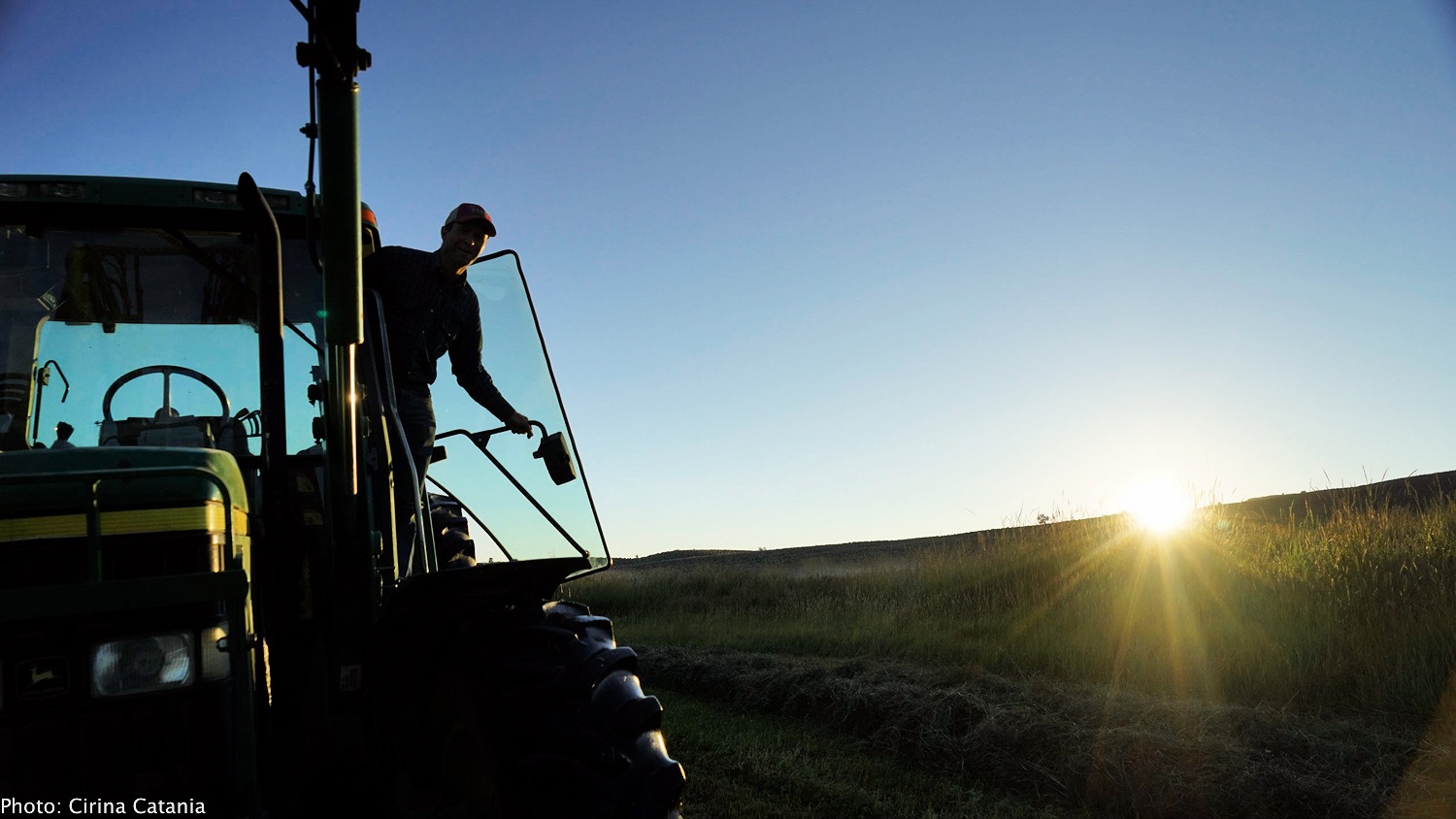
All photos, Cirina Catania (c)2016, All Rights Reserved
Interviews in the Heartland: Rancher Travis Williams is Making Hay in Harney County, Oregon
(Written and photographed by Cirina Catania, Harney County, Oregon, July 2016)
Listen to Travis William’s Interview here or read the transcript below:
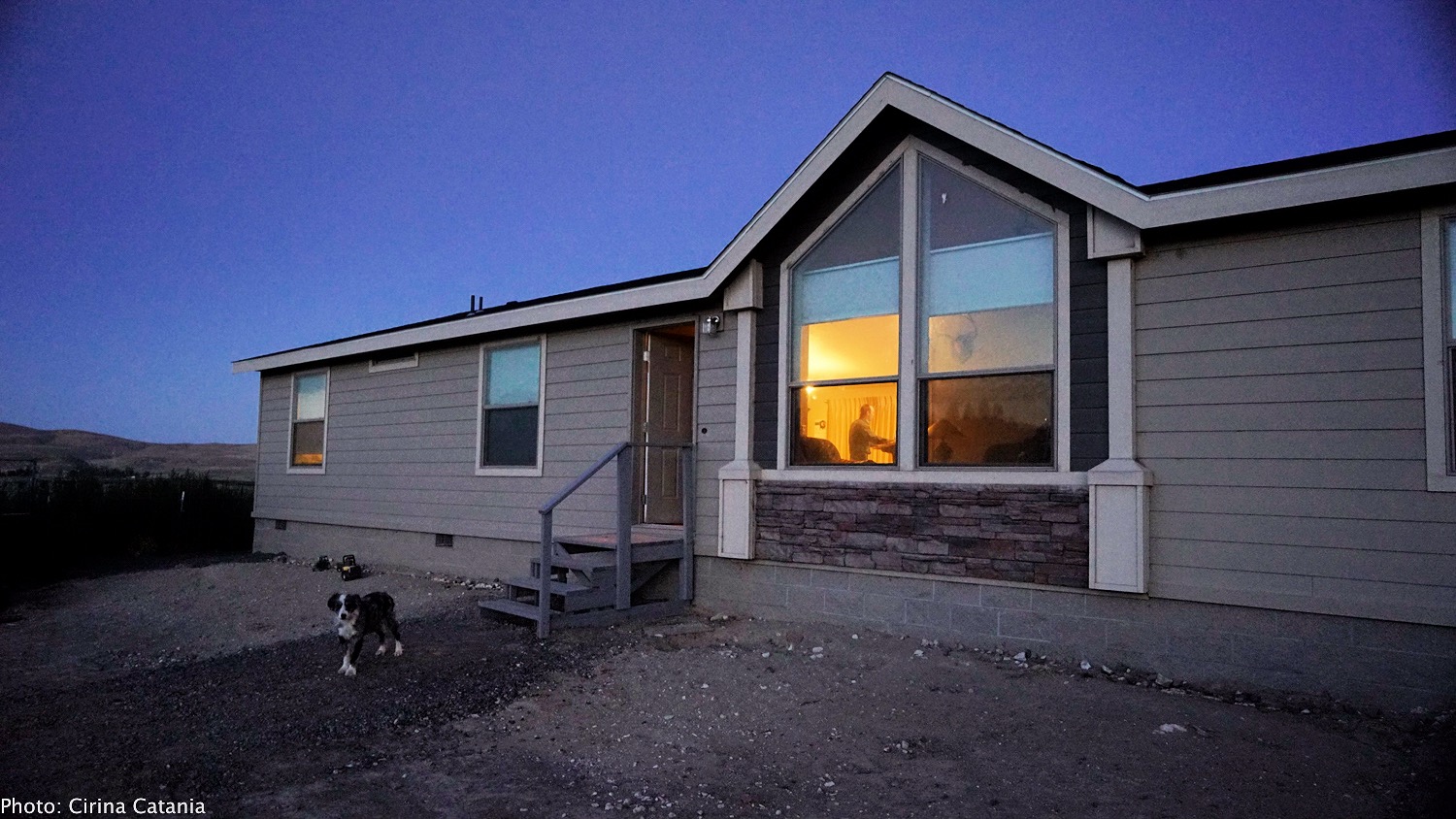
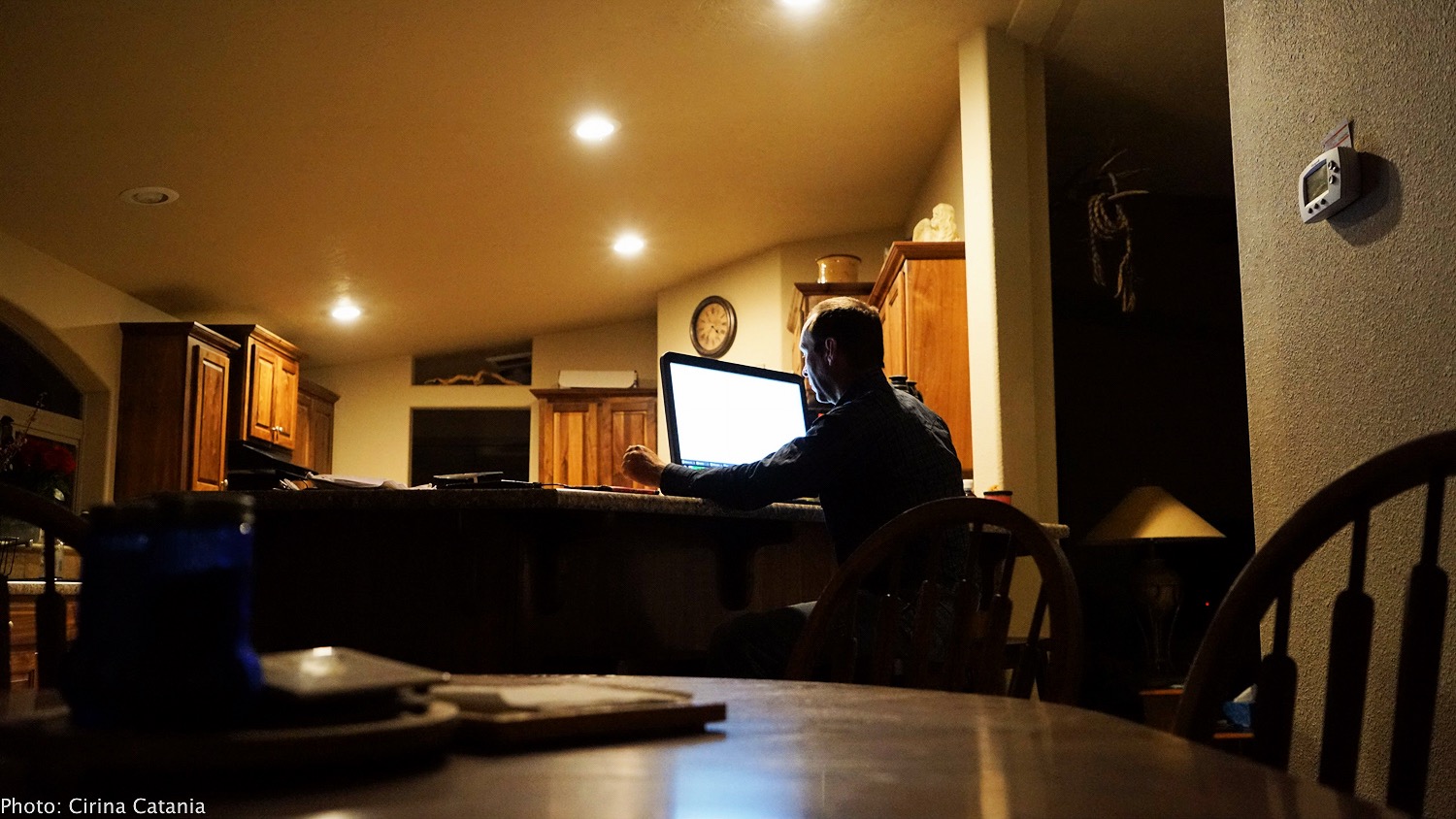 Husband, father and a 5th generation rancher, he is already working at his computer in the warm light from the kitchen, a coffee cup steaming next to him. It’s business as usual before the rest of the family sees light coming through their bedroom blinds. All is quiet here in this beautiful place fifty miles from the nearest grocery store.
Husband, father and a 5th generation rancher, he is already working at his computer in the warm light from the kitchen, a coffee cup steaming next to him. It’s business as usual before the rest of the family sees light coming through their bedroom blinds. All is quiet here in this beautiful place fifty miles from the nearest grocery store.
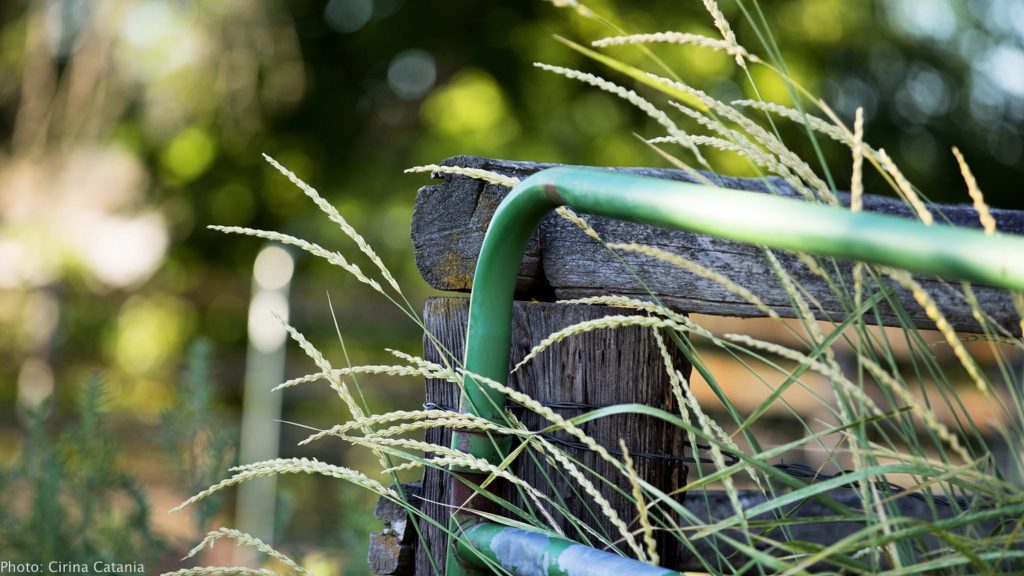
There is a small wooden cabin perched just outside the front steps of the modern house. I think it is a playhouse, but find out later that it is the actual home where Travis’ great-great-great-great-grandfather Hyram and his family lived in the late 1800’s. It’s tongue and groove logs seem to have weathered many generations and I wonder about it. What was life like in this tiny place? Today, children’s toys sleep on the ground, tired from the previous day’s play, resting till they are needed again.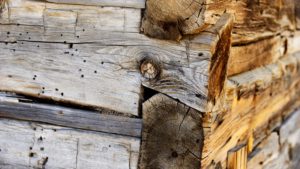
I snap a photo and notice that on one side, the corners are in perfect alignment. Later, I learn from Travis’ dad, Terry, that his father before him had decided to clean up the ragged edges and taken a saw to them. “Boy did he get in trouble for that,” he tells me, chuckling.
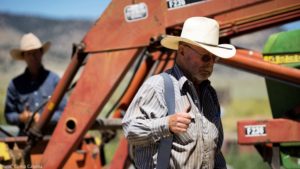
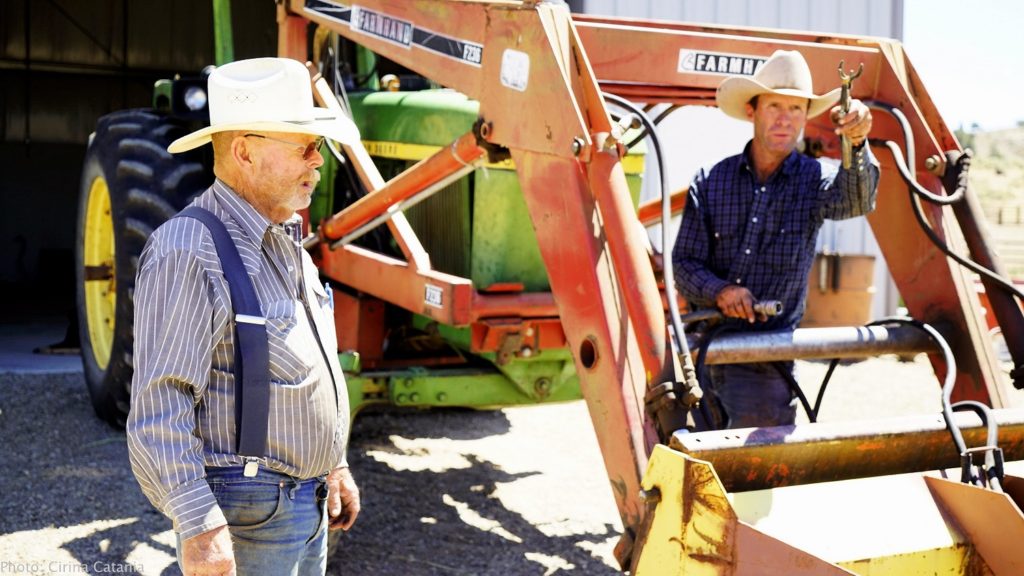
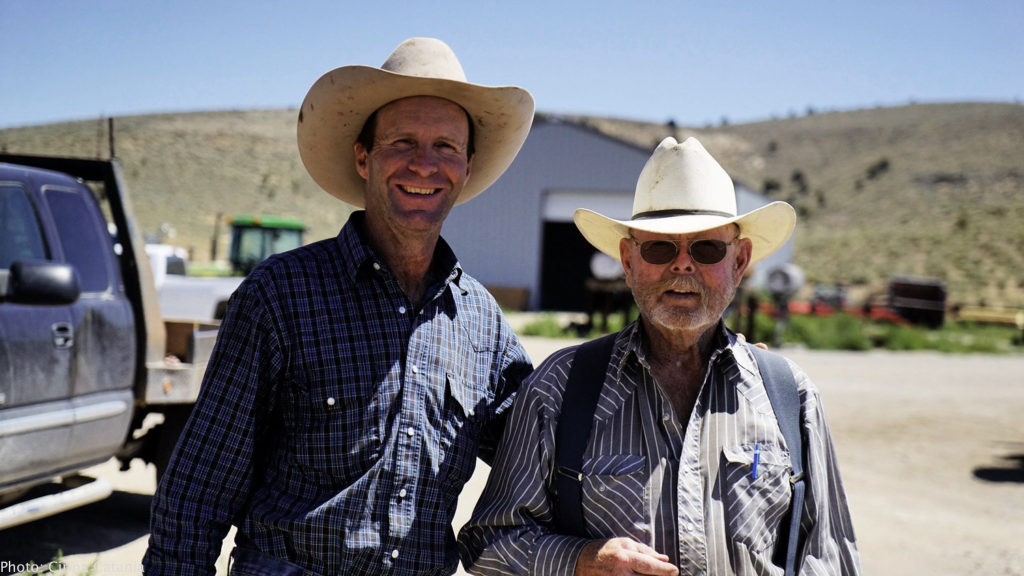 Travis’ Dad doesn’t laugh too often, but when he does, it comes from a deep place. He is known in these parts as a hard-working, hard-driving, no nonsense man who expects a lot of his family members and tells them in a moment if he is not pleased. There’s not much room for error when your work means the difference between food on the table or a very difficult winter indeed. This is definitely a hard-driving life.
Travis’ Dad doesn’t laugh too often, but when he does, it comes from a deep place. He is known in these parts as a hard-working, hard-driving, no nonsense man who expects a lot of his family members and tells them in a moment if he is not pleased. There’s not much room for error when your work means the difference between food on the table or a very difficult winter indeed. This is definitely a hard-driving life.
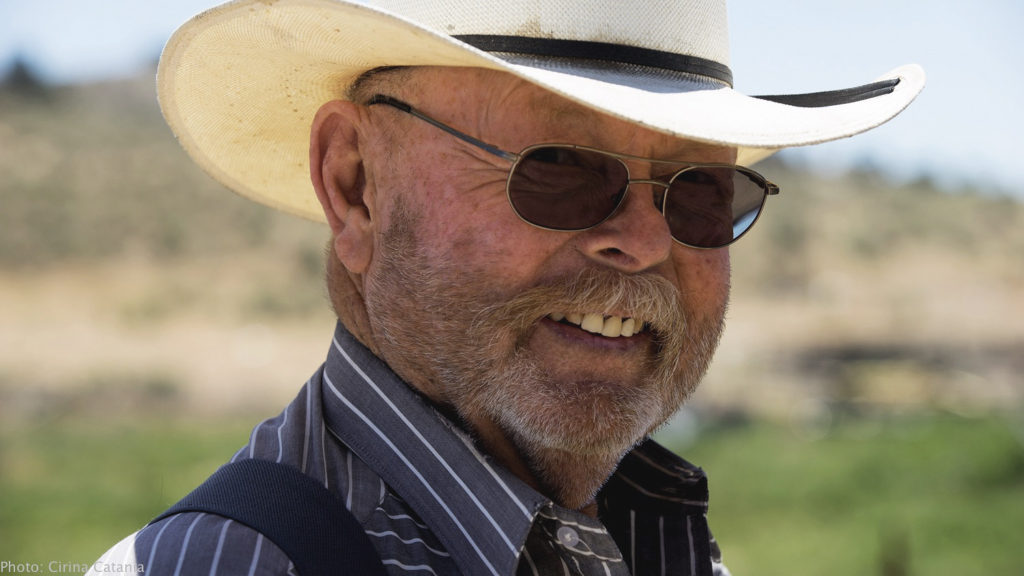
A few minutes after I capture the picture, Travis comes out ready for the day. He’s invited me to tag along as he rakes the hay field, We have a laugh because I tell him that in my world, when you say you’re going to rake the hay, you grab a rake from the garage wall. In Travis’ world, raking involves maneuvering a monstrous tractor towing a 20-foot long noisy swather behind it. There’s a big difference between an $11 rake from Target and the $300,000 rig I’m sitting in right now. 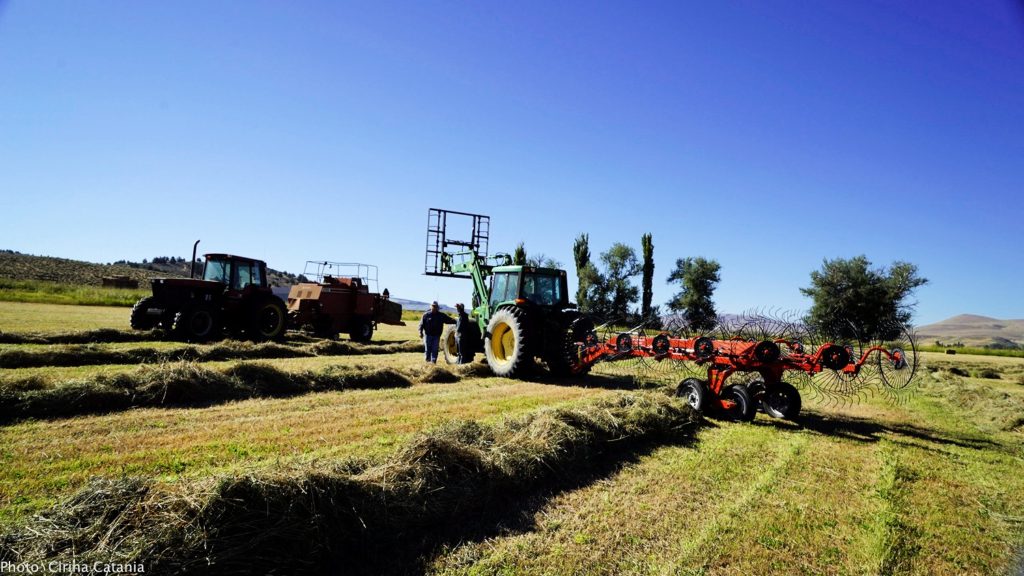
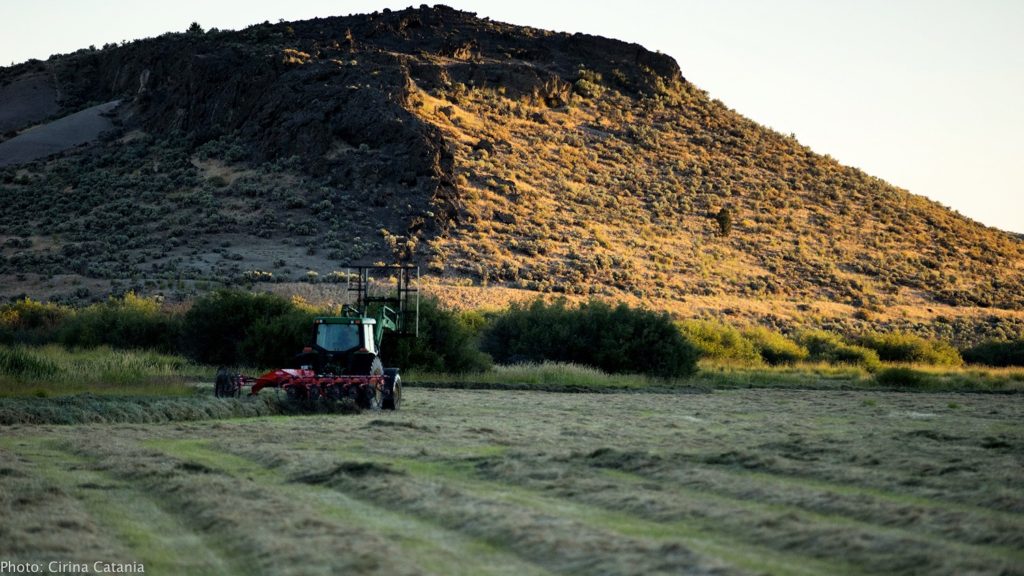 For the next few hours, as the sun finally decides to wake up and peer over the hills, we ride, talk, ride, talk and I learn much I never knew before.
For the next few hours, as the sun finally decides to wake up and peer over the hills, we ride, talk, ride, talk and I learn much I never knew before.
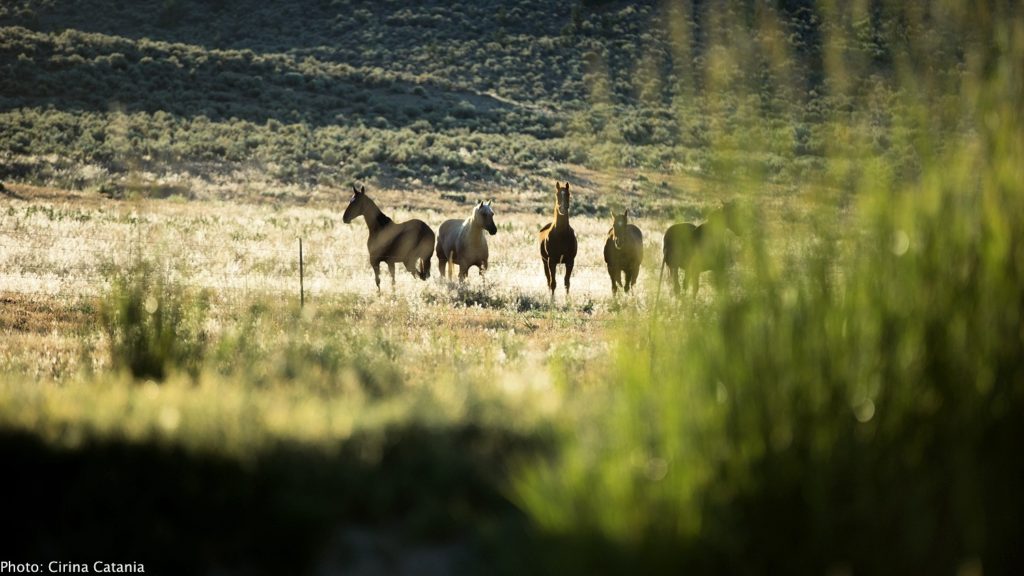 A group of horses are not too happy to see a stranger in their field and they snort and prance about trying to scare me off. Through the backlit dust past the morning rays, I see them staring, pawing the dirt, neighing and rattling the tall grasses that hide all sorts of critters who are still dreaming.
A group of horses are not too happy to see a stranger in their field and they snort and prance about trying to scare me off. Through the backlit dust past the morning rays, I see them staring, pawing the dirt, neighing and rattling the tall grasses that hide all sorts of critters who are still dreaming.
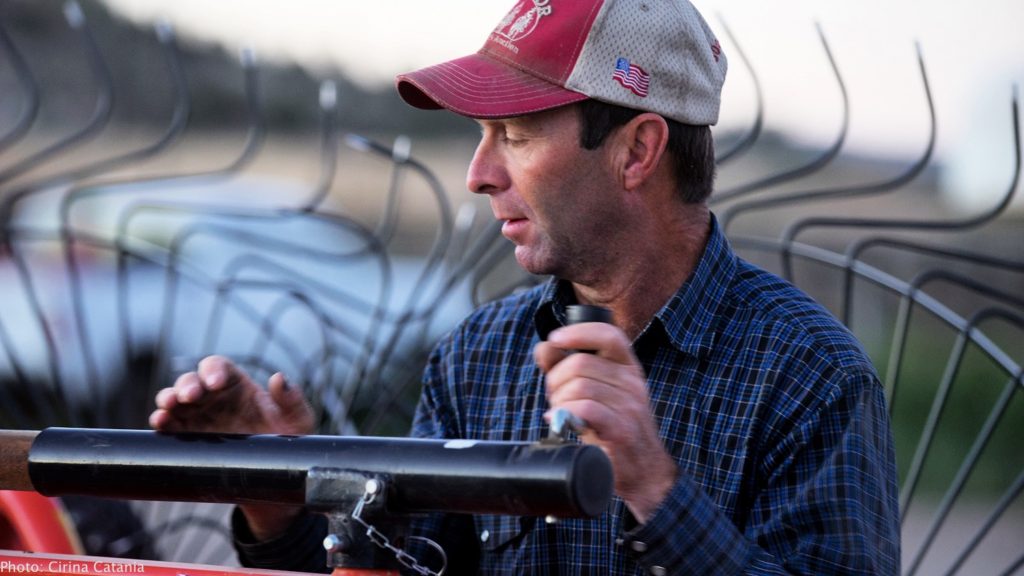
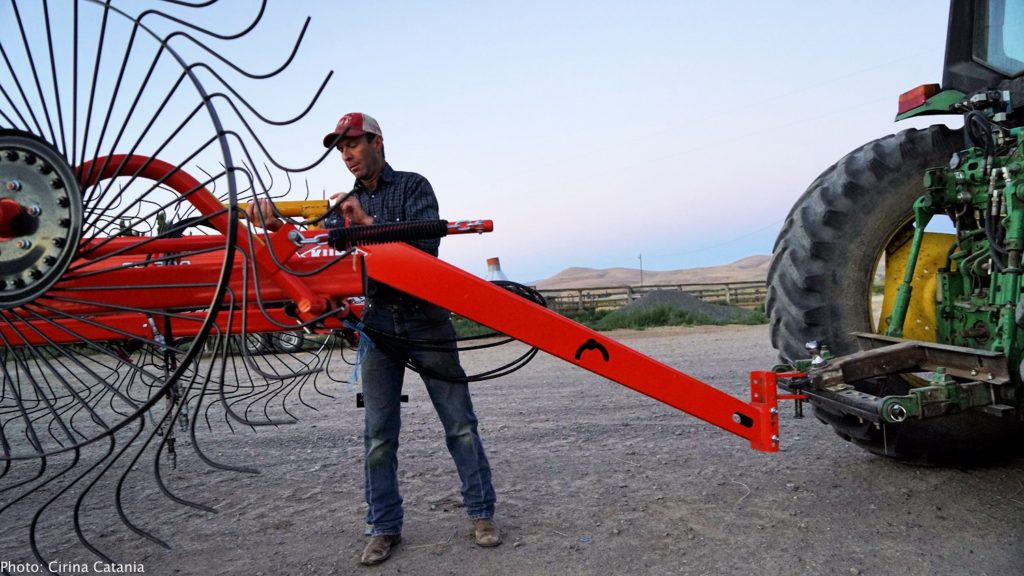 Travis is proud of his tractor and the new rake, which is now loudly gathering up double rows in very straight lines. It is not as easy as it looks and I wonder if I could do it. He tells me, “I try to get it as straight as possible for Rex, so he doesn’t have a hard time bailing. Time is money, you know.”
Travis is proud of his tractor and the new rake, which is now loudly gathering up double rows in very straight lines. It is not as easy as it looks and I wonder if I could do it. He tells me, “I try to get it as straight as possible for Rex, so he doesn’t have a hard time bailing. Time is money, you know.”
And we continue to turn slowly, huge machines, small humans tending to the land.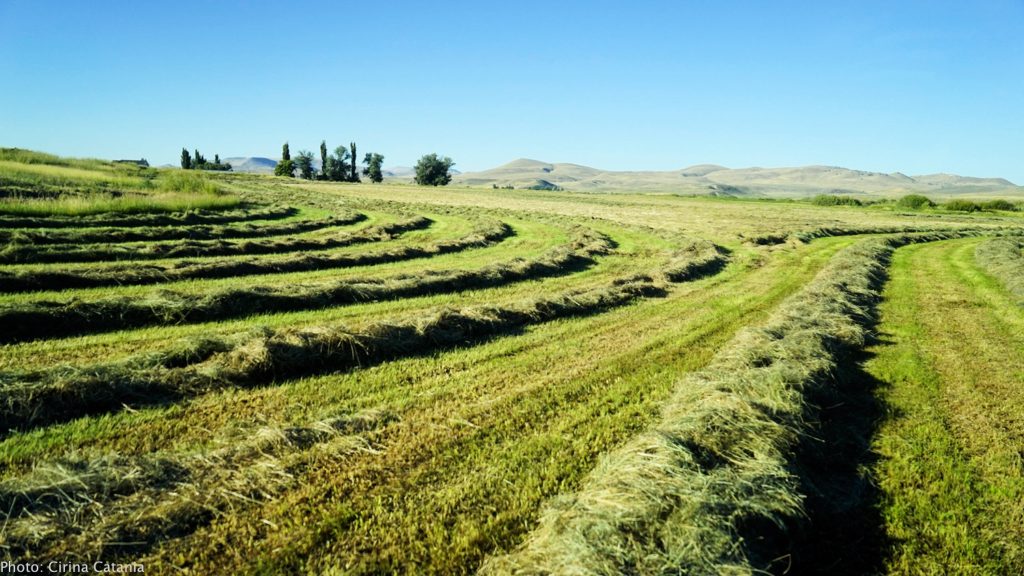
There are so many different kinds of hay with varying degrees of protein for the cattle, and many different ways to swath and bale it. It has to have just the right amount of moisture. Too wet and it might mold and could catch on fire in the hay stacks. Too dry and it loses its nutrients.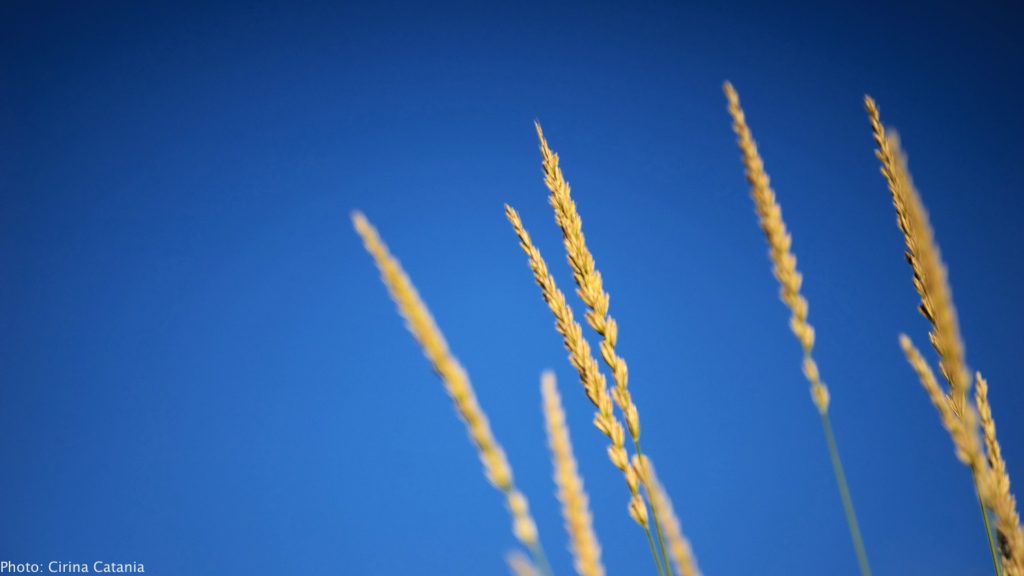
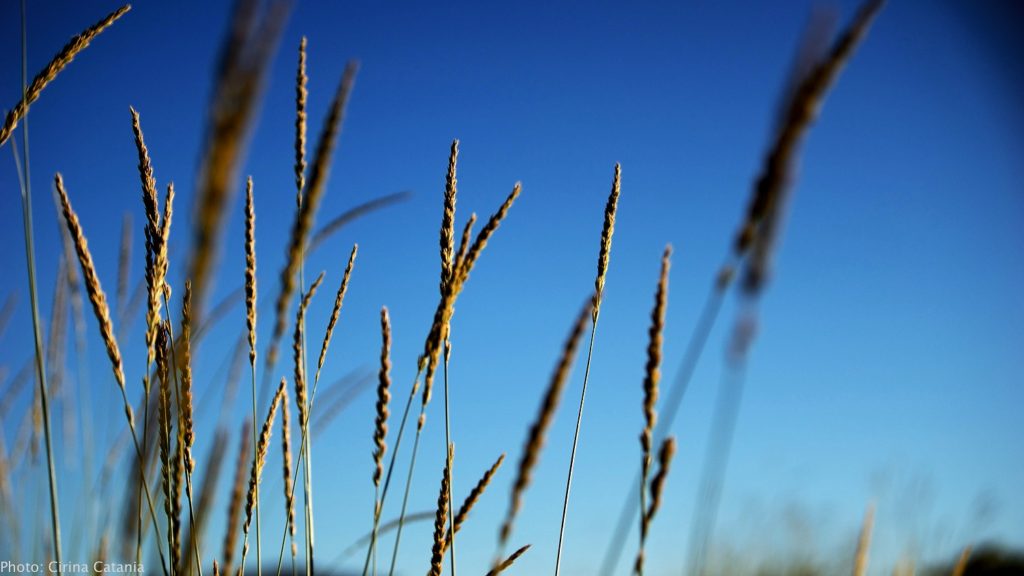
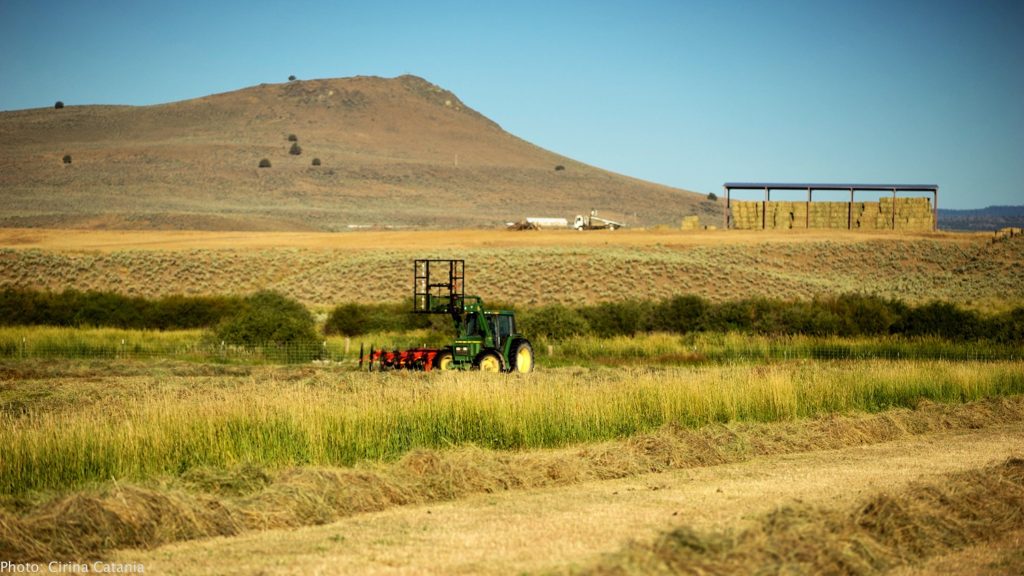
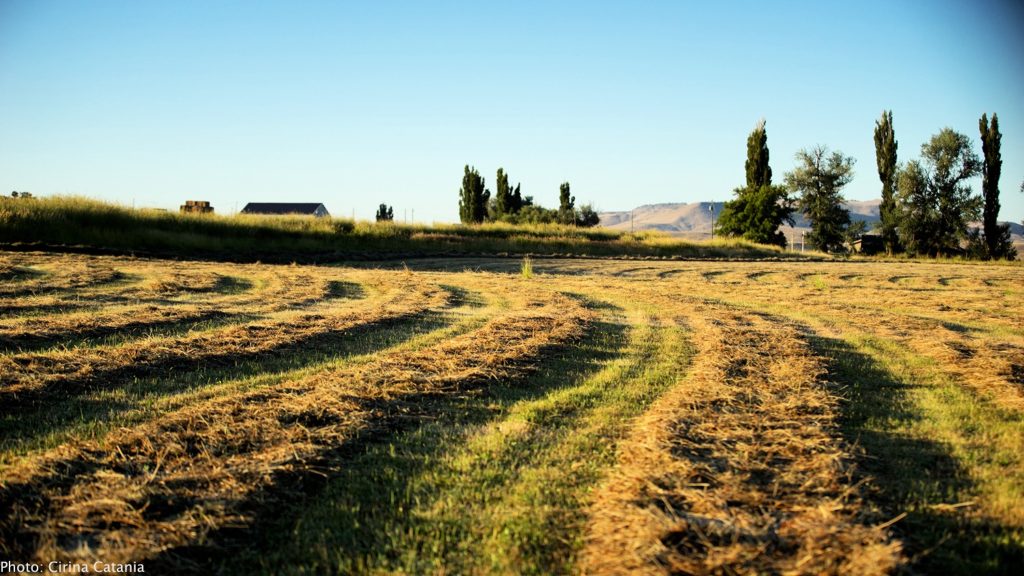
I ask about round, rectangular and square bales and find out that Travis prefers the 3×4 square size because they weigh less and are easier to pick up and manage. 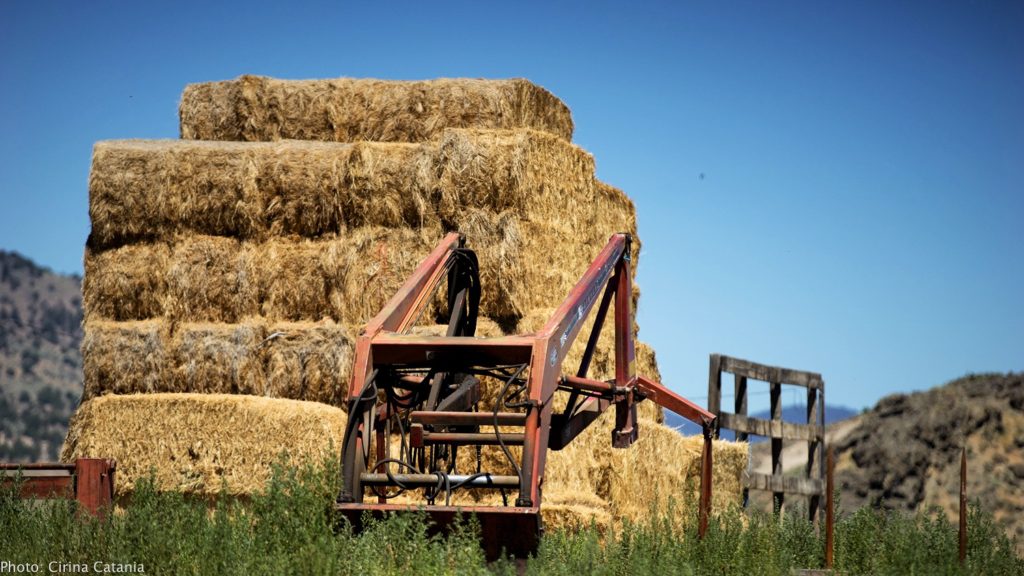
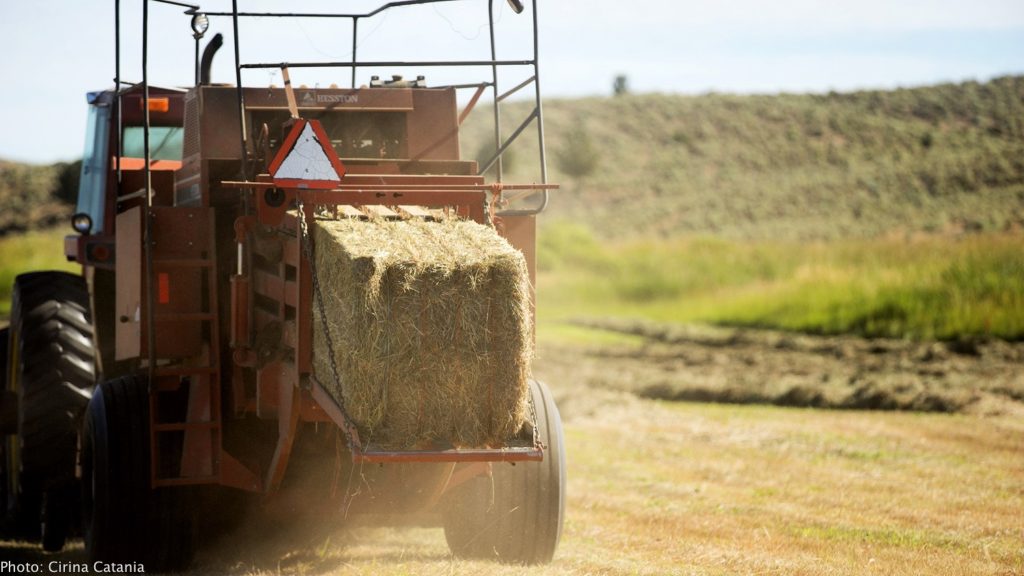
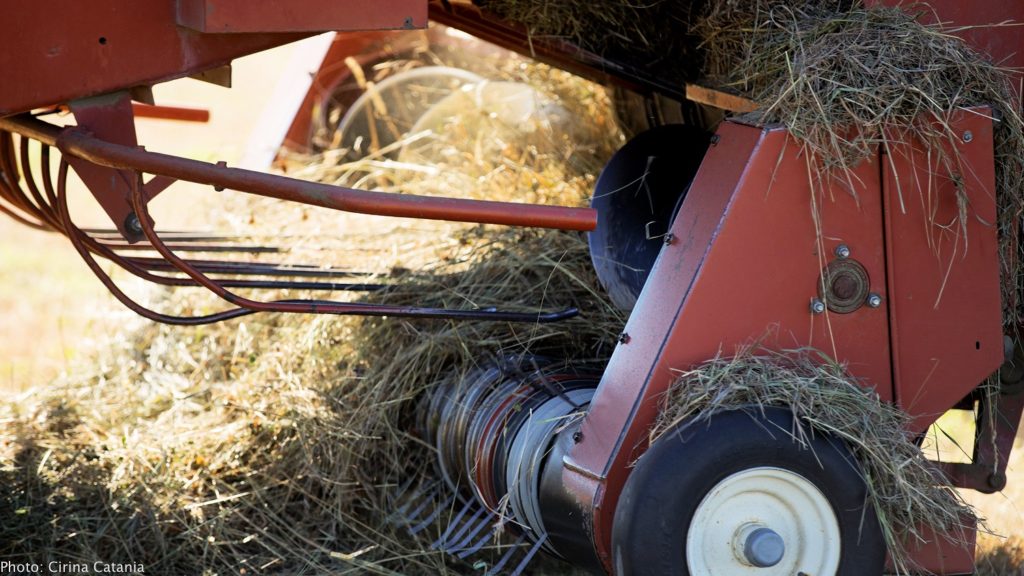
This crop will feed his cows all winter and keep his family’s ranch productive, putting food on our table as well.
And we turn, rows and corners are becoming smaller and smaller until we reach the last row. The swather’s blades rake, yelling at the hay to behave and it smells musty, dusty and wonderful.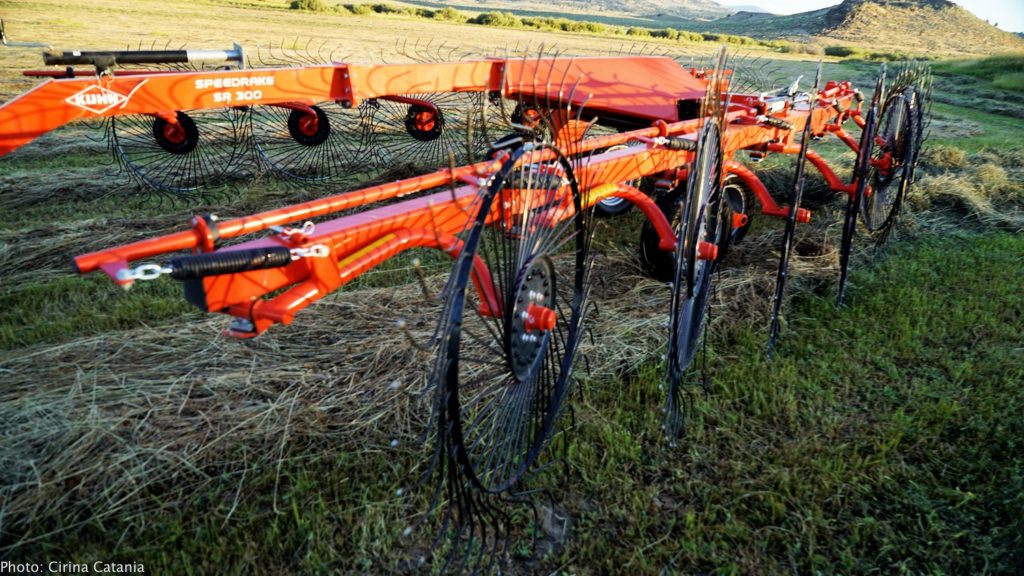
Hyram Williams, landed in Drewsey and in 1894 purchased 160 acres they had homesteaded in 1886 near that feisty cowtown full of loggers, cowboys and the women who followed them. Saloons profited and rumors swirl even today about the “good old days.” But Hyram was a family man and he and his wife, who operated the U.S. Government stage route from Burns to Ontario and back again for ten years, began saving so they could buy more land. The cabin that is next to the front steps of Travis’ family home is tiny by today’s standards, but luxurious in those days.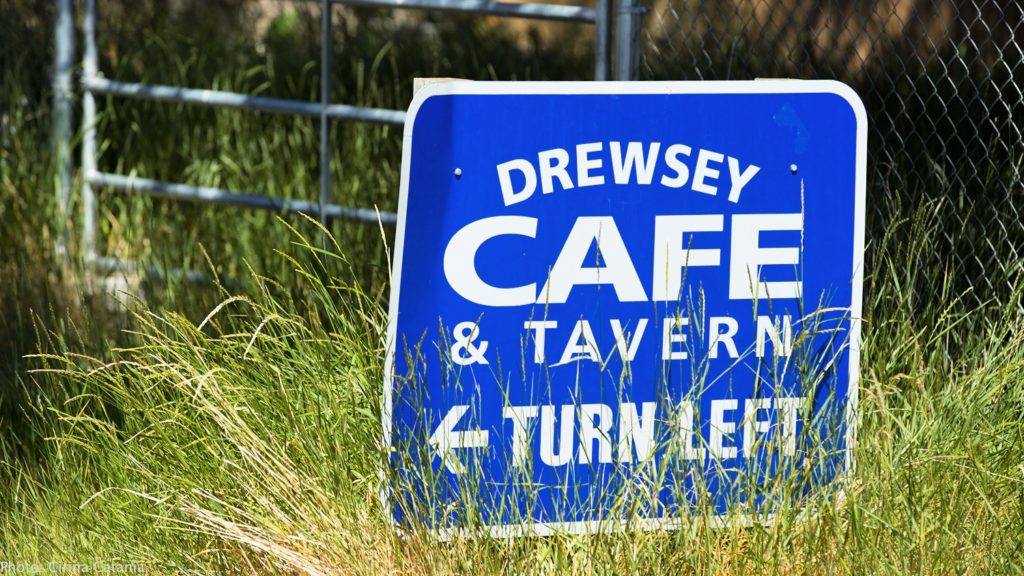
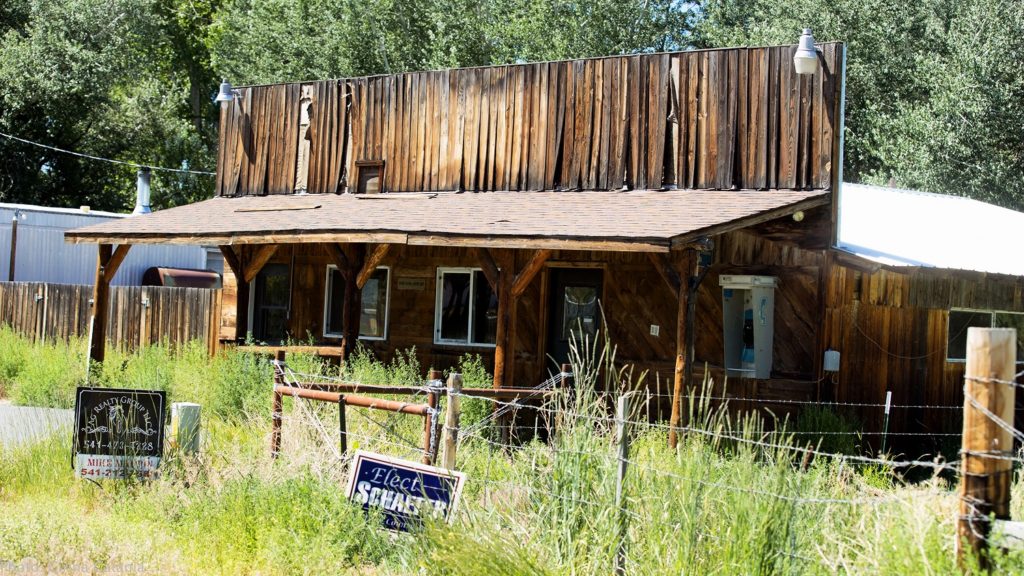
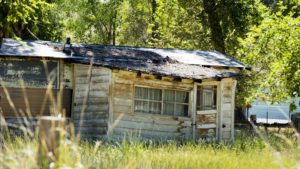
In 1977, Terry and Nancy purchased some land and leased other sections of the property and began running Charolais cows. Today, the Dash W Bar Ranch has the coveted honor of having been named one of Oregon’s Century Ranches.
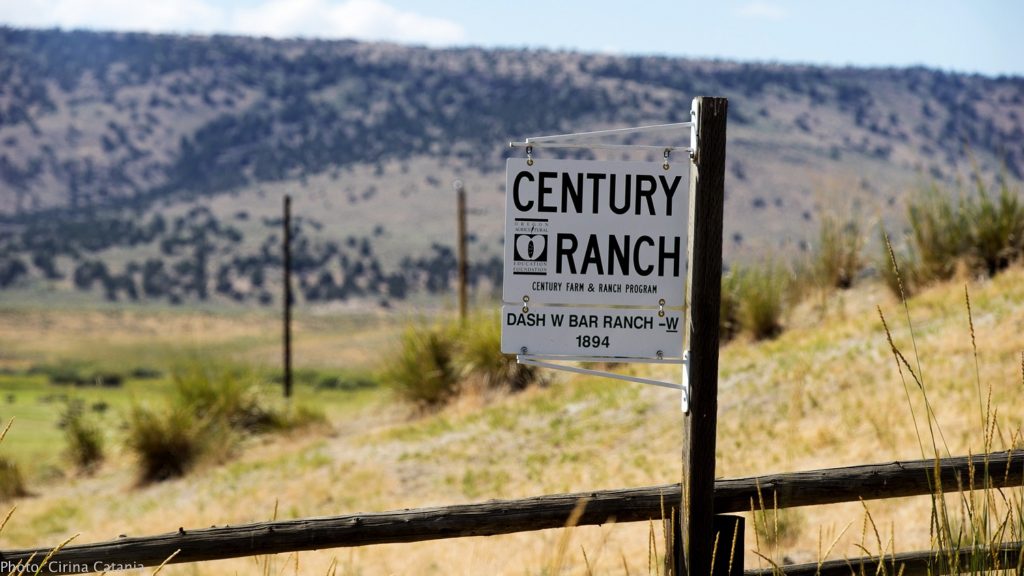
Travis and Linda Williams and their three children, Josh Tanya and Sam are a strong family unit. They share a common love for the land and the hope for a prosperous future, even through the hard times. Although Josh and Tanya were not home while I was there, I got a very strong sense of family values. Travis is quick to point out that all his kids are in the agriculture business and he has hopes that his grandkids will do the same. Meanwhile, I am thinking how lucky I am because this conversation and their hospitality allows me to partake in glorious portions of Linda’s family-famous chicken and broccoli casserole!
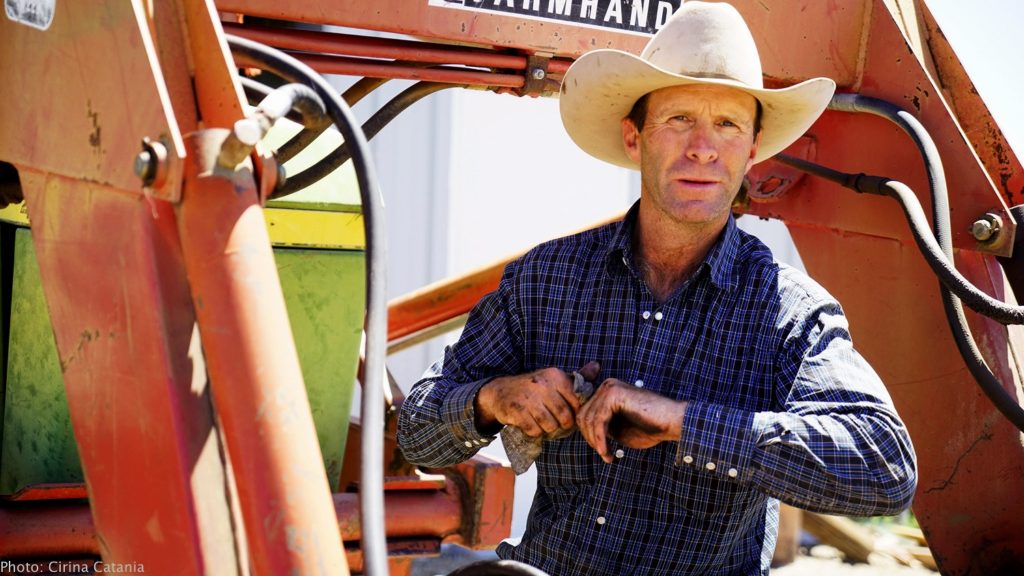 Long hours – hard, sweaty work in the sun and constant struggle to keep the ranch and equipment running, doesn’t stop Travis. Like most before him, he is stoic and quiet, preferring to listen rather than talk.
Long hours – hard, sweaty work in the sun and constant struggle to keep the ranch and equipment running, doesn’t stop Travis. Like most before him, he is stoic and quiet, preferring to listen rather than talk. 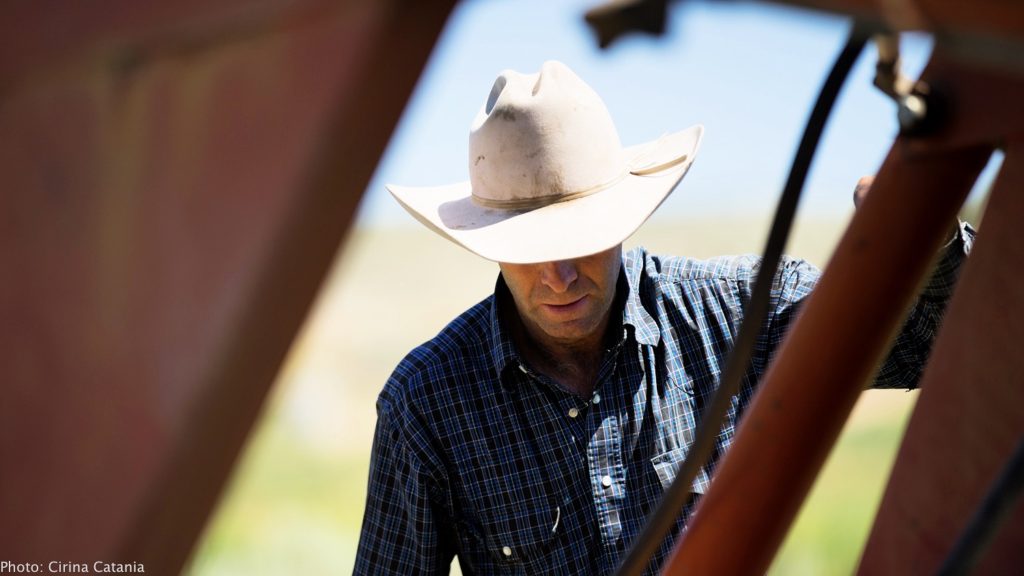
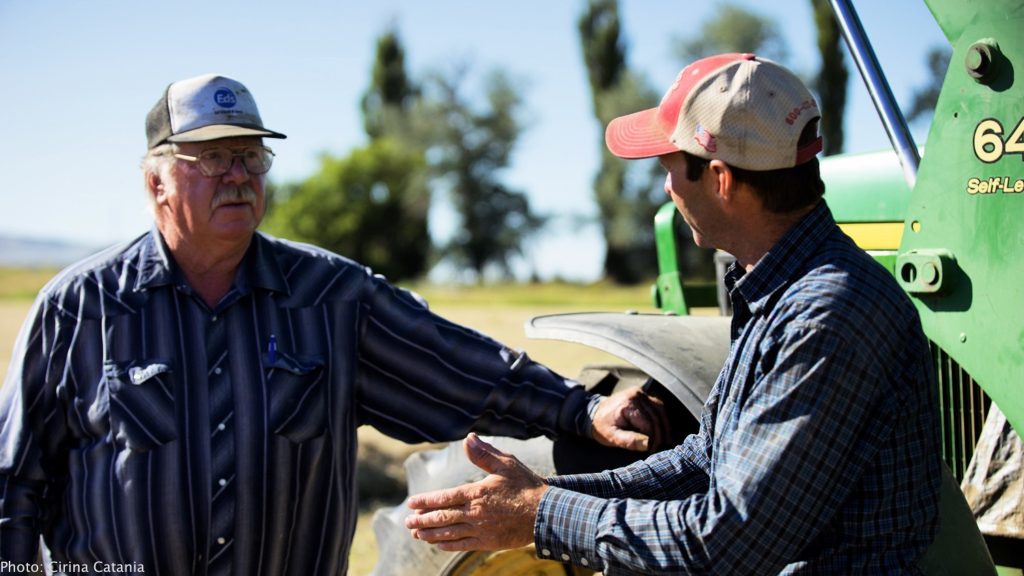
Once the hay is raked, Travis’ neighbor Rusy arrives with his bailer and gets to work. After a stop to say, “Hi” to each other, Travis moves on to help his Dad repair one of the tractors. You need to be a cowboy, farmer, rancher, carpenter, welder, plumber, electrician, mechanic, veterinarian, husband and father to survive out here.
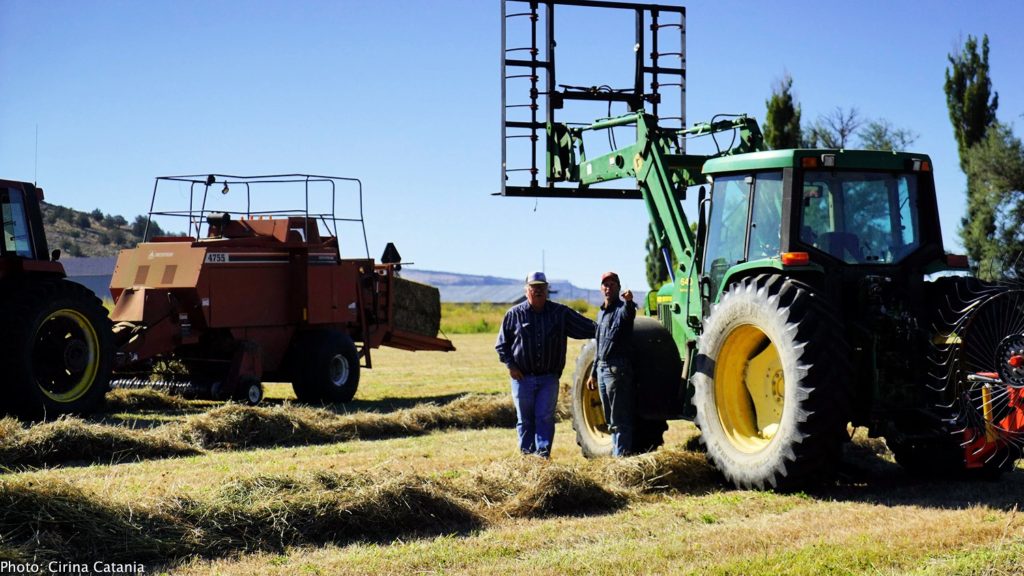
Linda works two jobs and still manages to take care of the kids, cookng great meals and sharing chores. She’s got a shy sweet smile that breaks into a huge grin when she talks about her family. 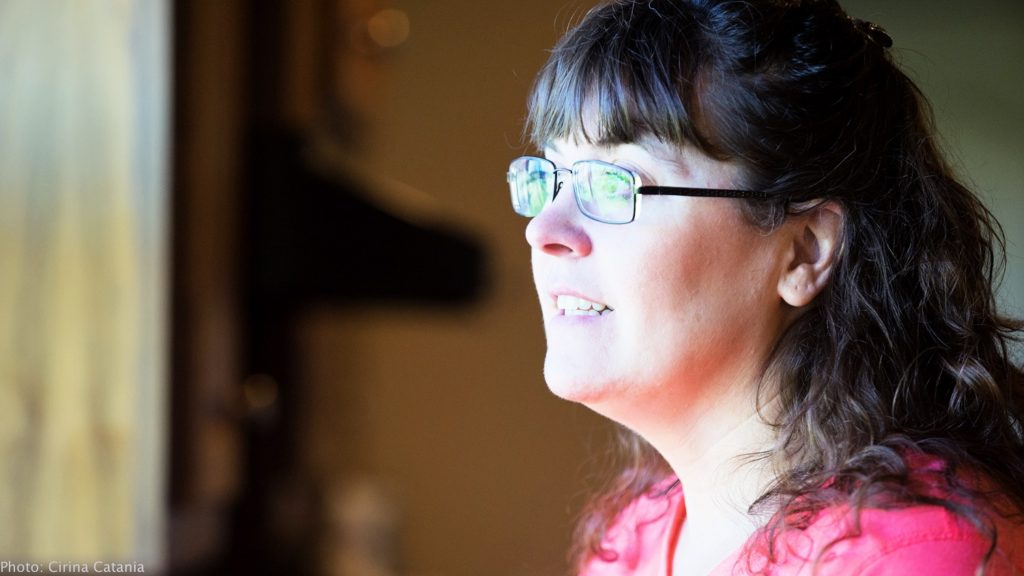
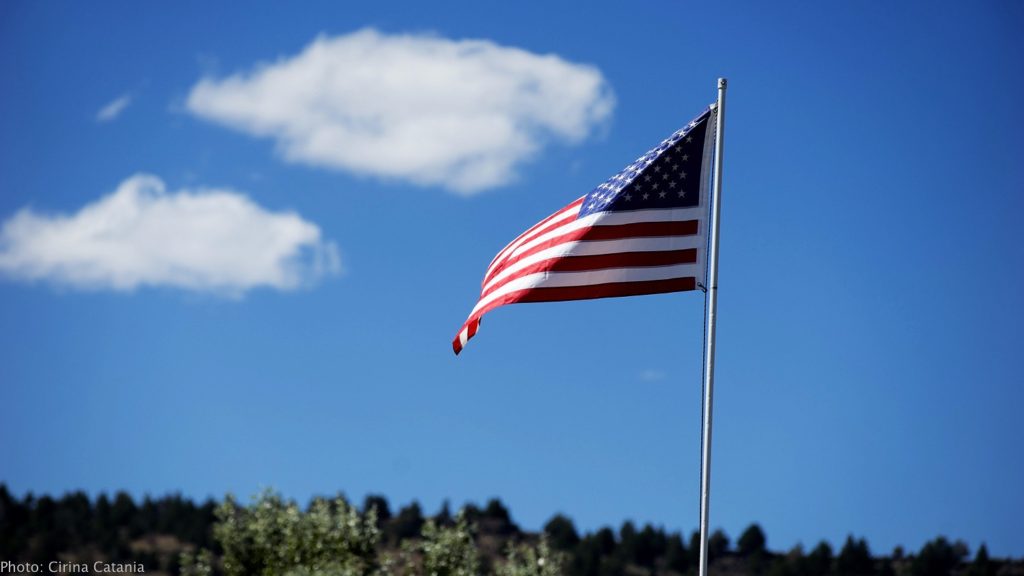 I asked Travis what he liked about ranching and why he continues to do it even though it seems at times that the going is just getting tougher. He says, “I’m a rancher ‘cause it makes me feel like I’m helping the nation by putting good quality beef on the tables for American. I really like that. That’s something I can hang my hat on and feel good about.”
I asked Travis what he liked about ranching and why he continues to do it even though it seems at times that the going is just getting tougher. He says, “I’m a rancher ‘cause it makes me feel like I’m helping the nation by putting good quality beef on the tables for American. I really like that. That’s something I can hang my hat on and feel good about.”
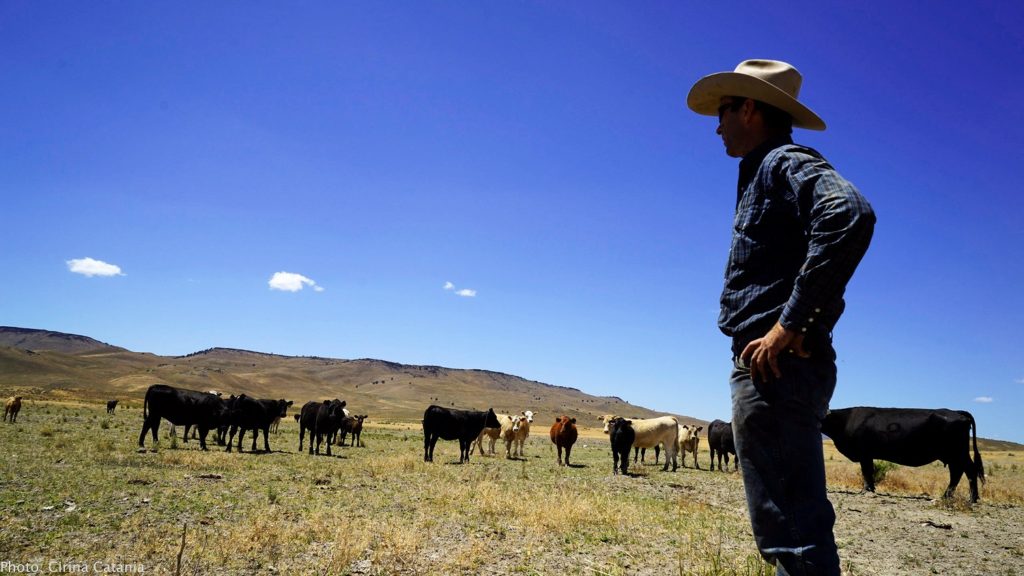
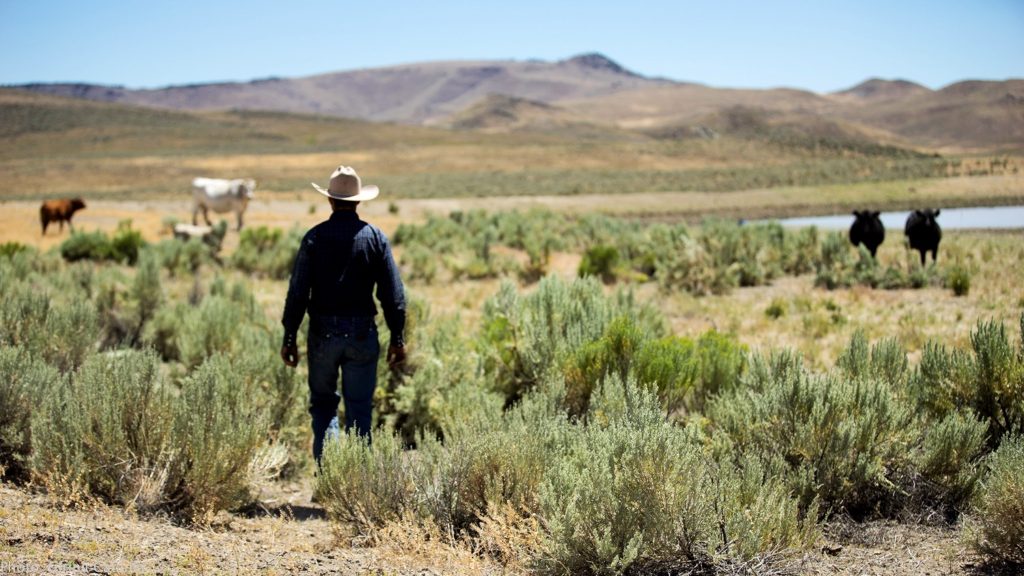
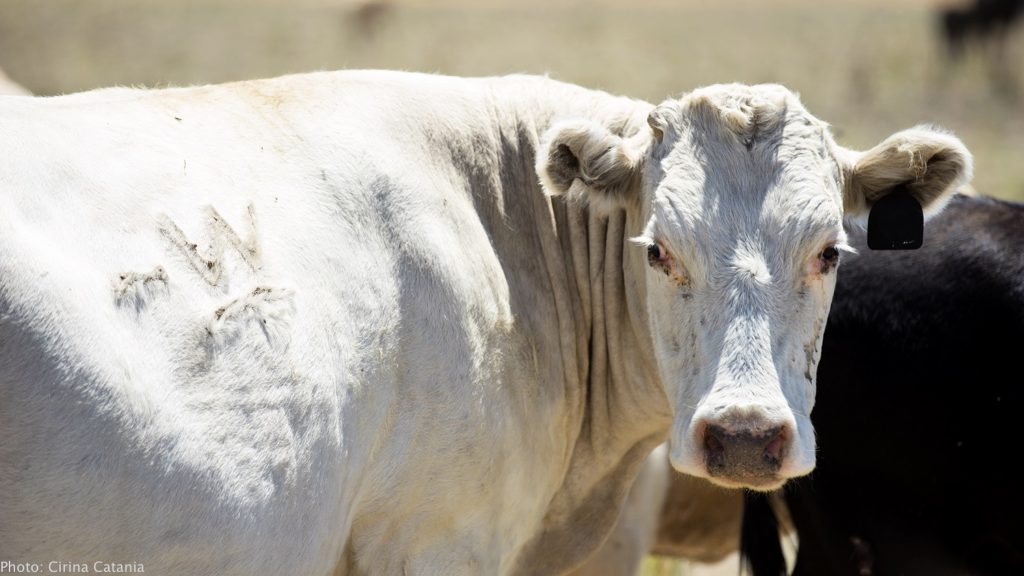
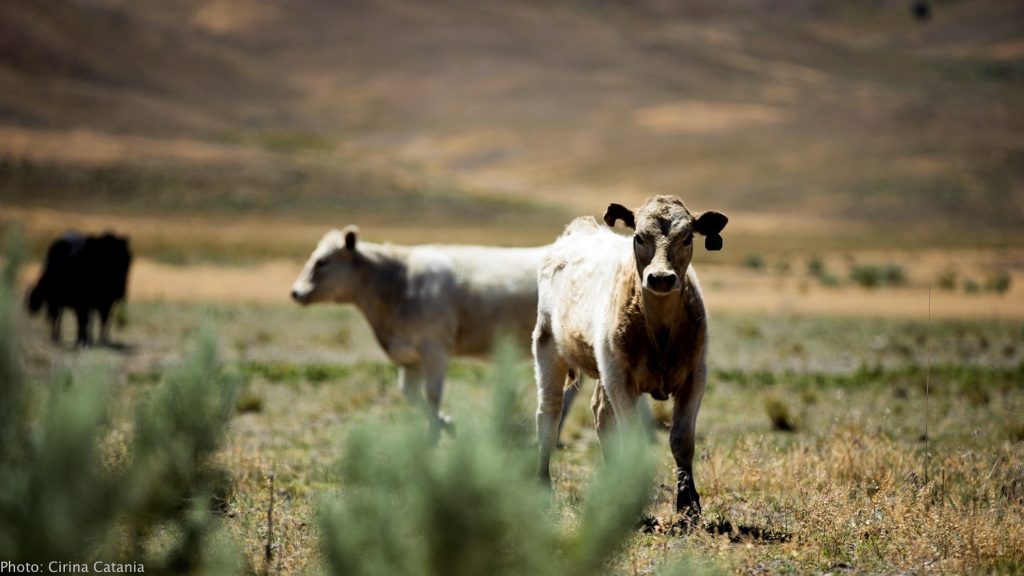
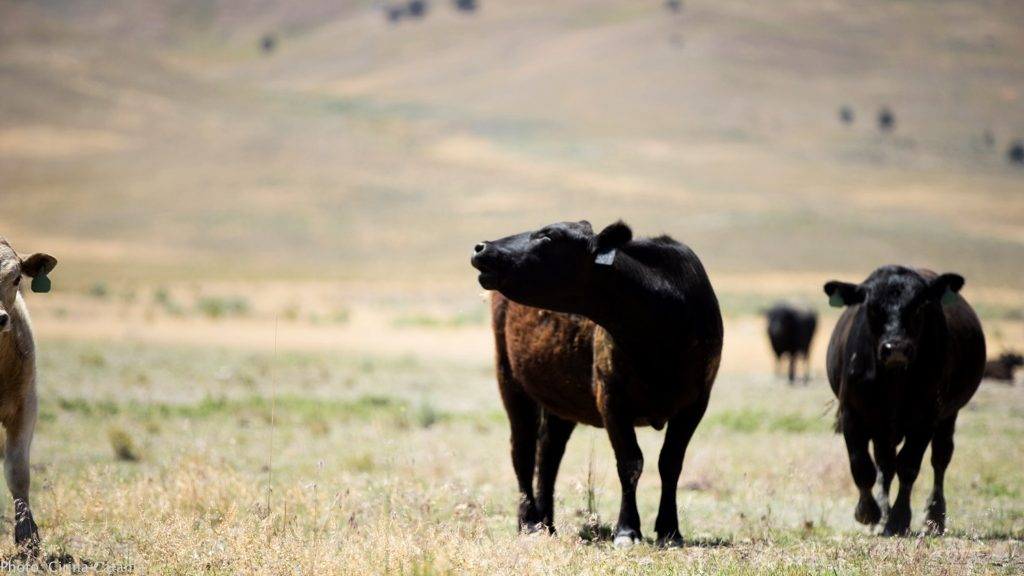
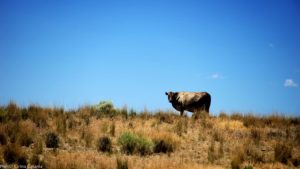
Later in the day, after the immediate work is done, we hop in Travis’ truck and drive to another part of the ranch so he can check on the solar water system he’s installed on the property and make sure the cattle are doing well. He’s built a piping system that feeds the guzzlers for animals on the BLM side of his allotment.

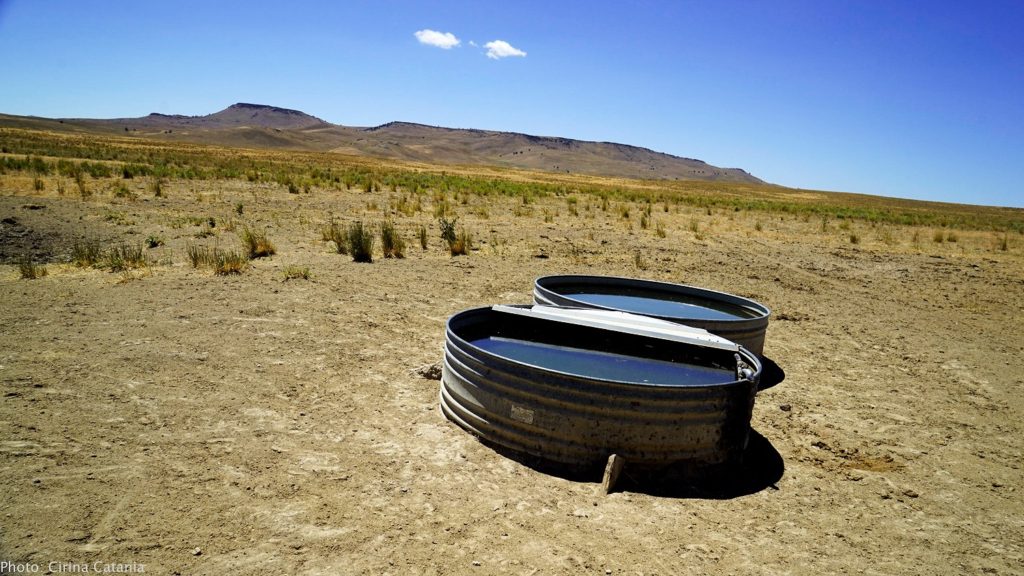
While we are there, I ask about the equipment on the back of the truck and he shows me far-off ranges that he and the other rancher volunteers via their “rural protection agencies” have protected from fire, even battling through the night to contain the flames until the rangers can get there. There are good fires and bad fires, and Travis points out that human life is paramount, but protecting the land is important to sustain our agricultural heritage.
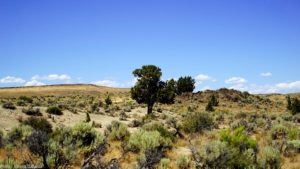
The sun has set, but there is more work to do. There’s a meeting of the community about an hour away and before he can hang his hat and take off the boots, Travis will volunteer more of his time to help others who are concerned about the encroaching regulations. How do we protect the Sage Grouse and still feed our country? Working side by side to solve problems and encourage each other through the hard times, the group spends a few hours together before disbanding and returning hours away to their homes.
By nine in the evening, we arrive back at the house where Linda has kept supper warm. Gathering around the table as we say Grace, I am grateful for the inspiration and comfort I’ve found here.
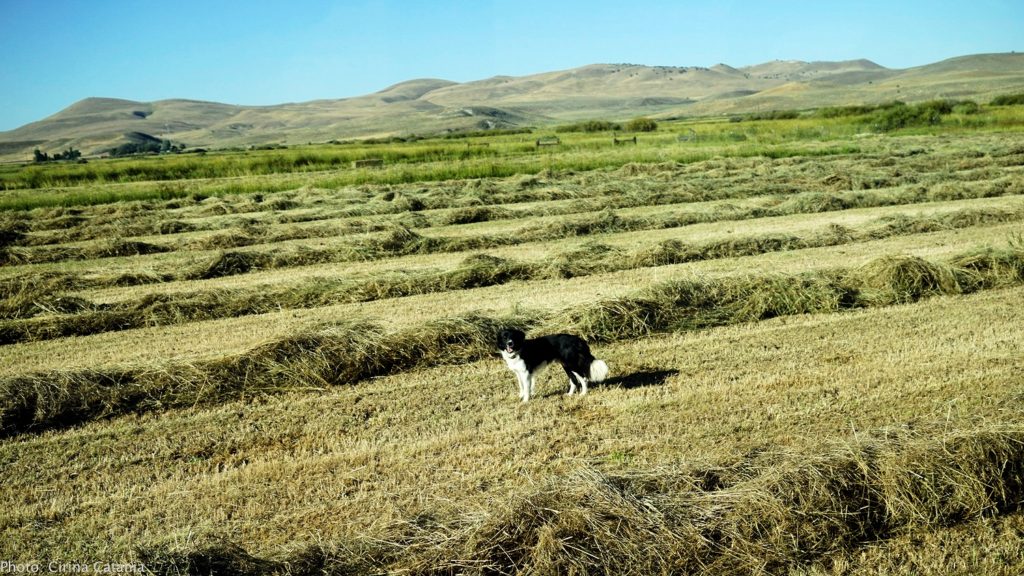 The next morning at 4 a.m. I’m up to have a cup of coffee and say goodbye. I grab their son, Sam, and decide to ask him about the work he is doing with his bull in preparation for the upcoming 4H competition. Travis heads out to the fields and a few minutes later, the horses neigh goodbye and dogs follow alongside my car as I drive away.
The next morning at 4 a.m. I’m up to have a cup of coffee and say goodbye. I grab their son, Sam, and decide to ask him about the work he is doing with his bull in preparation for the upcoming 4H competition. Travis heads out to the fields and a few minutes later, the horses neigh goodbye and dogs follow alongside my car as I drive away.
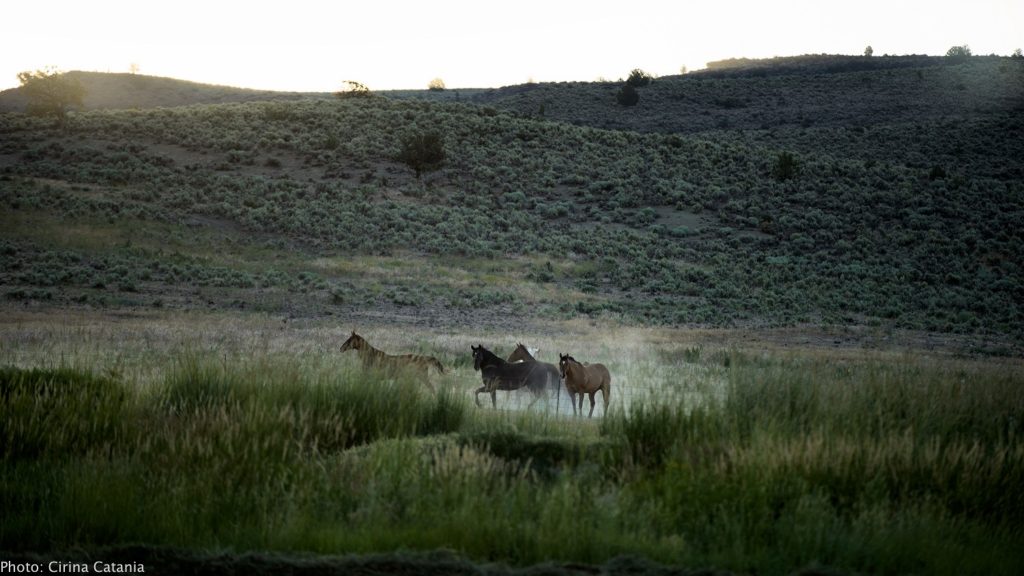
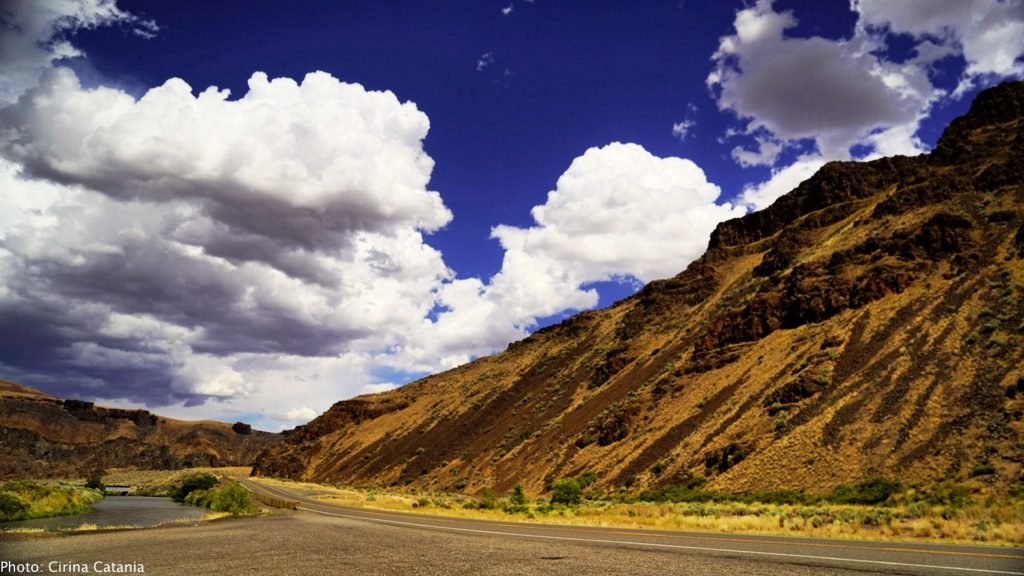
(Oh…a footnote: This is the dog that ate my microphone. Yep, first morning. But, hey, he must have thought it was a pack rat!)
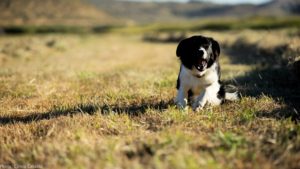
============================================
TRANSCRIPT:
US Times Senior Editor, Cirina Catania, traveled to Harney County, Oregon in July of 2016 to interview ranching families about their lives. This is the first in that series of interviews.
Travis Williams: My name is Travis Williams. I’m a rancher because it makes me feel like I’m helping the nation by putting good quality beef on the tables for Americans. I really like that. That’s something I can hang my hat on and feel good about. We are in Drewsey, Oregon. It’s an unincorporated town in Harney County. Southeastern Harney County. From the East we are 90 miles from Ontario and to the West is 45 minutes to Burns. My family came here in 1894 and purchased 160 acres, which was homesteaded in 1886 and the cabin’s still right here on the house site.
Cirina Catania: Which cabin is that? It’s that the one …
Travis Williams: The Dunkin cabin right here.
Cirina Catania: This little one, right up front?
Travis Williams: Yeah, that’s it.
Cirina Catania: I love that cabin. You know, your dad told me a funny story about one of the kids taking a saw to the edges and trying to straighten it out. Do you know about that?
Travis Williams: No, I don’t remember.
Cirina Catania: I wish I remembered who it was but one of the boys in the family, maybe a generation ago or something, took a saw and decided he was going to straighten out all the edges and sawed the edges off and got into real trouble.
Travis Williams: No, I hadn’t heard that. I bet you that was, that was probably him. (They laugh.)
Cirina Catania: Could be right?
Travis Williams: My family, they run mail stage, and that’s what brought them over here. They run mail stage for the US government from Ontario or to Burns for 10 years. So they came over here and run mail for the US Government and that’s what people did, they freighted. After they quit running the mail, you know, we’ve always had livestock here then they got into the sheep business. They got out of the sheep business in 1936 and started buying cattle and here we are.
Cirina Catania: You told me you were fifth generation:
Travis Williams: I’m fifth generation to live on the place and my kids and granddaughter are here in the state of Oregon and they actually are in the agricultural business so perhaps I could say my granddaughters, the seventh generation of Williams’ to be right here in this kind of lifestyle. That’s very, something to hang your hat on, to me.
My oldest son is 23 and he’s Sergeant in the Marine Corps, Recon division. I like to say that. Special Ops. He just got out. He’s moving back to Harney County which we’re very excited about. My daughter’s 19 and she lives in Emmett, Idaho, along with her fiancée and her beautiful little two-year-old girl. Then our youngest, Samuel, is 17 and he goes to high school in Crane, Oregon. A public boarding school. He’s just a regular 17-year-old that loves sports.
Cirina Catania: You have to board the kids in school?
Travis Williams: It’s about 40 minutes to Crane, so they board the kids there and they use the money, the transportation money that would be normally used to bus kids to pay for the dorms. That’s how the funding works.
Cirina Catania: There’s a steer out here out front. What’s that for?
Travis Williams: That’s Sam’s 4H project. Every year, the first of March, they take steers to get ready for the fair in the 4H auction, which they’ll end up selling their steer at a regular cattle auction.
All my kids have gone through the 4H and FFA program here, and I think it’s a great program to teach responsibility, and the kids have to take care of an animal and you get what you get put into it, just like life, you know? If they do a good job with the animal, he’s going to look good, he’s going to finish well, weight-wise, and they’re going to get a good price. If they do not, then they’re not going to get that.
Cirina Catania: Sam’s a good kid. What else does he do? He’s into sports, right?
Travis Williams: Yes. He loves football. In fact, he’s probably going to play college football.
Cirina Catania: Your daughter’s athletic too.
Travis Williams: She is. Very good hurdler in high school. Volleyball, basketball.
Cirina Catania: You’ve done really well with them.
Travis Williams: Thank you.
Cirina Catania: Here’s the important link we haven’t talked about is your wonderful wife Linda.
Travis Williams: Sure, yes.
Cirina Catania: Tell me about Linda.
Travis Williams: Linda and I first met in college, down in Susanville, California. Went to Lassen Community College together. She’s from Bishop, California. It’s quite a shock for her to move up here to this little remote part of the world, so that alone tells you what kind of woman she is, to spend 26 years with me.
Cirina Catania: You guys have a great life here. You were doing a long commute down to Bishop when you were dating.
Travis Williams: I was.
Cirina Catania: How far is the drive to Bishop?
Travis Williams: I think it’s about four, five hours.
Cirina Catania: You got to be in love to do that drive.
Travis Williams: Yeah.
Cirina Catania: That’s great. What year were you married?
Travis Williams: ’90.
Cirina Catania: In 1990. She’s a wonderful woman. I’ve talked to a lot of ranchers over the years and they get the attention because they’re the romantic sort of poster child for this part of the agricultural community. The women are really important too, right?
Travis Williams: They are. I mean, they raise the kids and we’re turning a new chapter in our life together because our kids are out growing up, but Linda’s taken on two jobs. She works as a waitress at the Oasis Café and Motel in Juntura, which is about 15 miles to the east from here.
Cirina Catania: Best home-made fudge you can get anywhere in this county.
Travis Williams: It is good. All the food’s good too. It’s a great place, yeah. Then she also works for the post office here in Drewsey. Just subs whenever she needs to. The only routine day she works is on Saturdays and they’re not open but they receive the mail and deliver it back out and she’s there about for 3 hours Saturday mornings, yeah.
Cirina Catania: Your family’s been in this area since the 1890s. One father to another father to another father and on down. Why do you continue to ranch? Why do you ranch?
Travis Williams: Because I like it. I just like it. I love the lifestyle. I like the many different hats I have to wear. I replace a lot of people. We do our own plumbing, electricity, whatever we need to do. Mechanics, welding, as I went to school to weld.
Cirina Catania: I didn’t know that.
Travis Williams: Yeah. I did work for some welding businesses, doing construction and this and that, before we moved back here in Ontario. I do like that getting up every morning and just deciding what I’m going to do today, instead of the same old routine. Punching the time clock.
Cirina Catania: What were you doing … Let’s take yesterday for an example as a typical day. What were you doing yesterday?
Travis Williams: I got up a little after 4:00. Had my coffee. Had to check my emails. Of course Facebook. Hooked on that. Then I left the house 5:00. We’re harvesting our hay right now so I had to rake some hay to get it to dry for the bailers, so the hay wasn’t put up too wet. Mold in the bail if it gets too wet.
Cirina Catania: Can I tell you something funny? You tell a city person you’re raking hay, they think about …A little hand rake.
Travis Williams: Okay.
Cirina Catania: I think it’s just funny. What do you rake hay with?
Travis Williams: We have a tractor. It’s a mechanical rake and it throws … The rake we have now, we just purchased, it’ll throw either two or three windrows together, which I just love it.
Cirina Catania: Yeah, because you were talking about why do you like the two rows?
Travis Williams: The two rows, first of all, for time-wise, because it’d take you forever to do every single windrow. You only got a 10-foot swath at a time. Then also it flips the hay over, because you do have ground moisture, especially in Harney County this time of year. You do have dew in the morning so it gets cold here and you’ll have heavy dew. A lot of times, you let the windrow dry on top and, once the sun comes up for a while and dries the top and you flip it over and it’ll dry the bottom.
Sometimes you got to do both. You’ll individually turn every windrow over, and then you’ll throw them together. There’s a lot of different options. If we put up the hay right. We’re trying to make the best-quality feed for our cattle and turn that over bring back profit to us and good meat for America.
Cirina Catania: You’re feeding America with what you do.
Travis Williams: Yeah.
Cirina Catania: We were talking for a minute about the hay and how important it is to do it at just the right time. Can you explain? Why does it have to be exactly dry and then what happens to it after you rake it?
Travis Williams: First of all, we tried to cut it when it’s done growing because, of coure, we want to get the most possible best yield, the most yield we can get out of it. The most tonnage There’s lots of different plant species that we cut. Clover, alfalfa, German and Horse Timothy and other grasses like that. There’s a few indicators that you know when you go out there that it’s time to go.
Cirina Catania: You were telling me, which of those grasses has the most protein.
Travis Williams: Your alfalfa and clover will have the most protein.
Cirina Catania: You need that. The cattle need that, right?
Travis Williams: They do.
Cirina Catania: The hay that’s out there, you’re growing that for your cattle so that you can sustain your cattle for the whole year, right?
Travis Williams: Yes.
Cirina Catania: What happens after you’re out there. How big is that rake?
Travis Williams: How big?
Cirina Catania: Yeah. Do you know how big it is? It’s huge.
Travis Williams: It’s a pretty good size, yeah.
Cirina Catania: It’s like, I don’t know, 30 feet or something?
Travis Williams: Yeah, I don’t … Probably 20 feet. Probably 20 feet long.
Cirina Catania: It rakes about 20 feet and it’s behind your tractor, and what you’re doing is you’re going around in these big circles and what were you trying to do yesterday, with the way you were putting these rows up?
Travis Williams: What I was trying to do the best I could is keep the win rows straight and place everything in a way that the bailer could bail it easily because time is money, even in our little, slow part of the world.
Cirina Catania: Time’s a lot of money. Those tractors are expensive.
Travis Williams: Yeah.
Cirina Catania: I mean, what does a big tractor like that cost?
Travis Williams: About 150,000 for sure.
Cirina Catania: Then you put the raker behind it.
Travis Williams: Yeah.
Cirina Catania: It took you a few hours to go around and get the rows put up nice and straight in big circles. It was great to watch. Then what happens after that?
Travis Williams: Our neighbor, Rex Robertson, showed up with the bailer. It’s a 3 by 3 by 8-foot long bail. Square bail that he puts this bailer puts out.
Cirina Catania: You were talking about how he has a computer in there that says whether or not … Can you talk about the …
Travis Williams: Sure. There’s a computer in this bailer that tells him when there’s too much moisture that he’s bailing, or it’s too dry. Both ways. If it’s too wet, he has to stop because it will mold inside the bail and you can start a fire with the moldy bail if you put it in the stack. Of course, with the dryness, the cows … It’s not as palletable for the cattle, if it’s so dry when you feed it into the wintertime to them, and it won’t bail, quite pick up as easily. It breaks up and you lose a lot of leaves off the plant and stuff. Then he has to come back with the dew in the mornings and pick up that dry stuff that he had to leave. Yeah, that computer’s pretty valuable to him.
Cirina Catania: Yeah. In the old days, people just have to feel it and smell it, right? It’s interesting to me that in towns like Los Angeles, people own, they own a house, they never feel the dirt. They never dig a plant. They have a gardener come over and do everything for them, so they don’t even know what the plants and the dirt smells like or feels like. They don’t touch it. Can you talk about what it feels like to live with the land?
Travis Williams: I believe so. I’ve done it my whole life, so I guess I take it for granted. You know, my family, we are a Christian household, so it’s really nice to, I don’t know, maybe it sounds a little corny but it seems like you’re closer to God out here, you know? I guess you see what God’s made, from the deer to the snakes to everything, and how everything kind of co-exists with each other and why this is.
Cirina Catania: What do you think about when you get up in the morning and you look out and you see this property, you see this land? What goes through your mind when you look out there?
Travis Williams: I see lots of pride, knowing that I’m part of something that’s way bigger than I am, but just … It fills me up with strength, knowing that my ancestors came over here and worked their butts off and had the strength to stay here and make this work, because this is a tough job, tough lifestyle, and it takes special people to do it. I’m definitely full of pride that I’m part of that.
Cirina Catania: When you say tough, what were you thinking about when you say it’s tough? How is it tough?
Travis Williams: Well, from like, it’s pretty darn tough to have to check Heifers in the middle of the night, every two hours for months. When you’re having … Heifers, two-year-old Heifers, a lot of times have problems when they give birth to their babies, so you put them in a tight spot and, every couple of hours, depending on if they’re coming in, you try to guess when they’re going to have their babies. Sometimes it works and sometimes it don’t. A lot of times, so throughout the night, you’re just checking them.
Then you’re out working during the day and checking them again. Then a lot of times, you’ll be pulling cows in the snow storm. We don’t have a barn where we pull the cows if we need to. You don’t always have to pull a calf out of a Heifer but sometimes you do and there could be complications, and you’re out there in the snow storm, 10 below at times, and then along with that, then you got politics to deal with, endangered species.
Cirina Catania: Talk about what you do here to take care of this land and why that’s important.
Travis Williams: Okay. Well, in the Springtime, we have a 15th of March turnout with our cattle, out on BLM land, or public land. First of all, I have to go around. I’d probably go around 15 miles of fence in the spring.
Cirina Catania: To do what?
Travis Williams: To make sure the cows stay in their right allotment. We have five allotments down here, south of the house, and so it’s real important to make sure the cattle stay where they’re supposed to because we could get in trouble because we have agreements that we sign with the BLM, that those cows are going to be in this field for this long, on down, so we hold true to that agreement and do the best we can to keep them where they need to be.
Cirina Catania: You’ve got 15 miles of fencing. How’s that fencing get put up? Who built that?
Travis Williams: Private contractors.
Cirina Catania: You have to maintain those?
Travis Williams: Yeah.
Cirina Catania: This land is a living for you and your family. This land sustains you and your family, right?
Travis Williams: That’s true. Yeah, if we didn’t take care of this land and kept on harvesting this grass every year, it’d be just terrible. I mean, it’d just be a weed patch. I’ll kind of explain from start to finish. From harvesting the hay, because that’s a lot of our sustainability is keeping our hayfields in good quality shape. It keeps the cow in good shape and they raise a nice calf and puts nice beef on the plate. The cows go out in the middle of March. The water comes on right behind him to irrigate. We flood irrigate, which is the process is the water is in a big ditch out of usually a reservoir somewhere above you, and then you have a smaller ditch called a spreader ditch that takes it out the big ditch.
Then from there, you cut trenches in that spreader ditch and the water just spreads out sometimes for a quarter of a mile across the field. You’re out there in the middle of the field, trying to push water, or cut ravines trying to get water to high ground and you’re trying to get every piece of the acreage wet that you possibly can. Sometimes it’s not feasible but you do the best you can. I’m busy with that, irrigating every morning and night, twice a day, for three months, and then we shut the water off, dry the ground up, and start cutting the hay and raking it and bailing it and stacking it. That’ll last for a month, a month and a half, and then the water’s right back on again. Trying to get some fall pasture up for cattle when they come in.
Cirina Catania: Then comes winter.
Travis Williams: Then comes winter, yes, that’s right. Then we feed cows the hay that we just put up for another three, four months. We’re pretty lucky. We’re able to go back out on our BLM in the fall, from about October to the first of January, so we don’t feed a lot.
Cirina Catania: You were telling me some things yesterday, when we were over in that one area over by Willows. Was it Willows Springs? Talk about the different grasses, but you said actually, something that I found very interesting, that when the cows walk on some of these grasses, it actually helps it to regrow. Can you talk about … Talk about the grasses and how they grow, what kind of grass and what the cows actually do to that.
Travis Williams: The native grasses around here would be your wild rye, your bunch grasses, and there’s a Siberian weed. I believe it isn’t native, and then there’s blue bunch, which is in higher elevations. What happens is it’s no different than your lawn. What we try to do is we get it grown up, and usually the top two-thirds of the plant is where the protein is, so what you try to do is eat it down halfway and you try not to get it any more, because you get it down too far and it stresses the grass, right?
Cirina Catania: Do the cows do that naturally? I mean, when a cow grazes, how much of the plant does it eat?
Travis Williams: They like the tops. They know where the protein is. Then, as they’re eating, of course you’re walking around and they’re cultivating. That’s what they’re doing. They’re tearing up this oil, no different than someone aerating their lawn somewhere. Then, of course, hopefully you get some moisture, we only get like 11 inches of moisture a year in Harney County. And sometimes we’ve lived with less than that. When we get the rains, the rains come in and it just pools there. Kind of like a pond, which helps a lot too.
Your bunch grasses are unique, in a way that they’re kind of a clump and God’s built them in a way that they’ll hold the water longer, so it’s a very valuable plant. Another great plant that we love and it’s called evasive weed. It’s cheat grass because it starts early in the spring, before the other grasses get started, and cattle love it. It sustains the cattle while your bunch grasses and your crested wheat, it’s a non-native but it’s a great plant too, comes up, so it actually kinds of helps the ecosystem in that part too.
Cirina Catania: Talk to me about how you’re managing the water over there. You have the solar system and the feed stand. Can you talk about how you … Because you have been in a drought so what are you doing up there to provide water?
Travis Williams: Our Shirts Field, it’s a section and a half of private ground that we have next to our winter allotment. We had a lot of Medusa Head Rye in this field, which is a very evasive weed that came into this country back in the ’20s and it just decimates the whole countryside. I mean, it’s just everywhere. Anyway, we had a lot of Medusa Head Rye in our field and we wanted to somehow get rid of it so we end up burning the ground, planning 3 different plant species in there, drilling it in, and then we let the plants get established and then we sprayed it with a herbicide called Plateau that kills Medusa Head.
In order to control that, we needed to keep the grasses eaten down and cultivated, keep them strong and healthy with the cattle, but we didn’t have the water to do it. We went in and put in a solar panel pump, to power our pump, to water crops with an overfill, then it actually goes into another pond so we can water the smaller wildlife and calves and such. Then it kind of grew from there. We needed water, some more water, in our winter permit, also for wildlife and spread the cows out. We ended up piping from our private water tank out into the BLM and put in that water tank also.
Cirina Catania: You provided a water tank to the BLM.
Travis Williams: Yes.
Cirina Catania: What does that water tank do? What animals use that water tank?
Travis Williams: Of course, cattle use this water tank, deer. Well, I’m sure little animals use it too, and there’s a little wildlife … I don’t know, walkway is what I call it, in all the tanks so mice and stuff can get out.
Cirina Catania: What we were talking about is the solar system you put in to manage the water to make tanks and you have one tank that’s on your … Is that deeded land out there, the first part of the land …
Travis Williams: Yes.
Cirina Catania: You have, the ranch here has deeded land, which your family has been on, so can you explain who owns what?
Travis Williams: Yeah. We have five thousand acres of deeded ground here that we purchased throughout the years for our base property.
Cirina Catania: Since when?
Travis Williams: Since 1894 is when we came into this country and bought the first place, and then we run on another sixty-thousand acres of public land, so we really need the public land to make our business profitable.
Cirina Catania: That was through the permitting process?
Travis Williams: Yes.
Cirina Catania: Going back to when?
Travis Williams: Going back to the Taylor Grazing Act. (NOTE: 1932) I believe it’s when they started establishing allotments and grazing rights.
Cirina Catania: I need to have you explain something. You were talking about how the cattle, you know, people complained about the cattle tromping the land and damaging the grasses, but it’s really the opposite, isn’t it? What do cattle do to help the land when they’re on it?
Travis Williams: They mow it, just like you mow your lawn. The cattle are used to manage the forage out in our allotments. They knock the grass down so that it stays pliable, I guess, for other wildlife to eat because there’s … A deer, they’re a smaller animal than a cow. A cow’s a pretty large-bodied animal. You got your deer, you got your, I’m sure the coyotes probably eat grasses to get their bacteria in their body and make everything work properly. Then there’s other animals that eat the grasses that are small. They’re not going to be able to eat the tall grasses when they get ten, twelve inches tall.
As we all know, as grass ends its lifecycle, it dies, right, with anything, so as that grass gets tall, it dies. Well nothing’s going to eat it when it dries out after it dies. What the cow does is come in and eat the grass down to a certain height. As a manager of the land you have to watch that and keep a sustainable stubble height there so you don’t stress the grass too much so it comes back the next year.
Cirina Catania: Also the cows have an instinct where they eat the protein off the top and they leave a certain amount …
Travis Williams: Yes. The cows leave a certain amount and they’ll just throw in the wild horse, the feral horse, excuse me, will eat the grass clear down to the ground. That’s the difference how the feral horse can hurt the rangeland versus the cows, and of course we’re managing our cows to be a limit. It’s not managing the feral horse, so that’s the big difference there, but I’m getting off subject here. It’s really important for the cows to graze the grasses down after it’s dead so the new grass can come up the next year and stay nice and green for the smaller animals to eat and for the entire ecosystem. While they’re grazing, they’re cultivating seed with their hooves.
As the cows are mowing the grass, they’re also cultivating it like you would be aerating your lawn, for a healthy lawn, so that’s what we’re looking for is a healthy lawn, I guess. That’d be the best I can say.
Cirina Catania: They’re actually, when they’re walking on the grass they’re aerating it.
Travis Williams: Yeah.
Cirina Catania: You mentioned there was a certain type of grass that actually needs to be pushed down in order to grow up again. What was that?
Travis Williams: Your crested wheat needs to be ate down pretty aggressively and cultivated, and crested wheat is great for a non-native species come into the country. It’s a great grass. Normally any non-natives is considered evasive weeds, like medusa head, but crested wheat is great. I don’t know the nutrients level in crested wheat but cows do well on it, especially in the fall. It’s more a fall feed. It stays greener longer, like we saw yesterday when I was driving around, all that green plants that you were seeing, being so dry out and everything else so dried up, the crested wheat was still green. With that, it’s a great, fire resistant, so it makes a great fire barrier. Those two examples right there makes it a great feed.
Cirina Catania: Talk about how much horses eat and how much cattle eat.
Travis Williams: A cow will normally eat about twenty-eight pounds a day, where a horse will eat closer to fifty to sixty-five pounds a day. A cow, they’ll eat for a couple three hours of the day, and they’ll probably graze around a little bit, but they’re pretty much done, where a horse will eat a little bit at a time all twenty-four hours. They’re a little different on what times they eat and how often. A horse will eat less more often throughout the day, and like I was saying, they’ll eat right down to the ground if you let them. It stresses the grass and it won’t come back. It kills it.
Cirina Catania: Talk about, it’s difficult times for a lot of people including the BLM in terms of resources.
Travis Williams: Part of our job here in the range is sustainability along with our Bureau of Land Management and I know with all the procedures that our range people are doing right now on a local level to take care of the endangered species like Sage Grouse, their resources are pretty thin right now in Burns with the BLM. I do a lot of trying to help the BLM whenever I can.
One way we try to help the BLM, we monitor our own ground. They have people that monitor, we have what we call range cons that take care of allotments. Our range con would come out in the spring and talk about our rotation over allotments and then throughout the year he’ll be coming out and checking things, but they’re very limited on our local BLM office. They’d like to be out in the field but they’re inside doing paperwork. That’s what they do now. As a producer, we find the need to go out and check the grass for them and if it looks like the cattle need to be moved to help protect the grass, we all get ahold of a range con and move the cattle to protect the ground. That’s a very positive relationship that we have …That keeps the grass healthy.
Cirina Catania: Now, there’s a truck out there with some equipment in it.
Travis Williams: That truck is part of the rural fire protection agency. There’s eighteen in the State of Oregon. This one that the Drewsey Community is in is also in Crane, which Crane is forty-five minutes away to the south of here. It’s an association made up of local ranchers and we’re able to go out alongside the BLM and fight fires. A lot of ways it’s helping the BLM, especially in a busy fire season. The resources are thin, so the ranchers are a part of the association and we can get right on the fire and most of the time we can put it out ourselves, or at least knock it down so the BLM can get out, so when they get out there they don’t have a huge problem. We’re fighting hand in hand along with the BLM to keep a healthy ecosystem and resources intact.
Cirina Catania: Explain one thing to people who don’t know, including me, what’s the difference between a good fire and a bad fire? What’s a good fire and what’s a bad fire?
Travis Williams: (He laughs) – Timing. No. A good fire would be something where you have a lot of old grasses that haven’t been eaten, a lot of brush where just nothing can get to. A good fire would be taking out the old feed and going through a piece of ground that has a lot of grasses that nothing can eat.
Cirina Catania: So what are you going to see out there that you need to clear with the fire?
Travis Williams: You’re going to see what we call wolfie plants, like bunchgrass, if it’s not ate down every year it’ll create just these dead grasses that come up in the center of it called a wolfie plant. Then eventually that nice bunchgrass will make a perfect circle and you can see if it gets stressed by getting too old or ate down by a ferral horse it’ll change formation, so it’s a good way of telling how the ecosystem is doing for that grass, or in that area. As this plant gets wolfie, if it hasn’t been eaten down for several years I would say that would be a good fire that went through and burnt that all out. That plant has the opportunity to grow back up and be healthy again.
Cirina Catania: If you burn it.
Travis Williams: If you burn it, yeah, because at that point, when it gets wolfie like that nothing’s going to eat it, so the only alternative is to burn it to make it healthy again.
Cirina Catania: What’s a bad fire and what causes a bad fire?
Travis Williams: A bad fire would be like, of course, threatening homes. Human life is the ultimate. You’ve got to protect that.
Cirina Catania: There’s also when a land has not been grazed, you get the wolfie plants, you get an overgrowth, and when the fire burns then it burns hotter and it burns higher and it burns faster …
Travis Williams: Yeah, there you go.
Cirina Catania: Can you talk about that?
Travis Williams: Yeah.
Cirina Catania: If you don’t graze, and people don’t know this, if you don’t graze or if you don’t like … I don’t know what you call the fire that you like to clear off plants. I’ve been through areas of this country where the cattle have been taken off and I can show you the Mojave Preserve prior to the fire where the cattle have all been taken off and it was totally overgrown, really high, and then the fire comes in and starts, either lightening or whatever. The fire starts and it’s almost impossible to contain and it burns thousands and thousands of acres, but it doesn’t burn off, and this is what I’d like you, or maybe I can just …
Travis Williams: No, that’s fine.
Cirina Catania: What it doesn’t do is, if you get it right away it’ll burn down the small stuff and then it’ll regrow, but in the Mojave, the fire was so hot it burned homes, it melted steel, it burned down four-hundred-year-old Joshua trees that normally wouldn’t even be touched, or trees burned, it literally wipes everything out and it’s irrecoverable because it’s too hot, right …
Travis Williams: I talked about the wolfie plants and how fire is the best alternative to knock that down. You asked about a bad fire. A bad fire would be in an area that hasn’t been grazed for many years due to maybe location or procedure you’re your relationship with BLM. What happens is through the years, the grasses keep growing and growing and growing and die, so that produces a huge fuel load. With that fuel load, as that fire goes through it creates heat, and with that heat, that fire is going to burn things that normally wouldn’t burn. Juniper trees, they’re like a Roman candle when they go up. They’ll drink a lot of water, and take in a lot of water through a year and they are pretty wet, but man, they explode.
If you have undergrowth carrying that fire to these trees, and around here we have acres and acres of just Juniper trees right next to each other just intermingling, so if a fire gets into that bunch of trees it can carry for a long ways. It’s been five, six years ago now, there was a three-hundred thousand acre fire just south of us, same reason.
Because of location, cattle is kind of in the higher elevations here south of us about ten miles, but because of the location, the cows weren’t getting up there and the cattle haven’t been out there long enough to get out there, but there’s a lot of fuel load there. That fire took off and it burned up homes, corrals, forage, and it was so hot that it burned up forage that it was going to take years to come back for the wildlife and livestock.
Cirina Catania: Five generations ago your family came here and established themselves here.
Travis Williams: I’m a fifth-generation rancher in Harney County, a little town called Drewsey. I love this lifestyle. My wife and I, we lived off the ranch for five years before we moved here, so I know how it is to live in town and punch a time clock and do the same thing day in and day out. At the time my youngest son was not very old. He wasn’t in high school yet, and it just broke my heart that Linda and I were both having to work while we were in town, so when we got off work we’d go get Joshua, that’s our oldest boy, from the daycare center, come home.
Of course, we were both tired and of course you had a young child to take care of, or my wife did. I usually fell asleep on the couch, so I didn’t spend a lot of time with my kids. It was just the same routine, same routine, so it’s very nice to be able to move back here to my family’s ranch and have our kids working alongside of us and learning a work ethic that was brought to me by my father, so here we are.
Cirina Catania: So I’m sitting here on this beautiful morning and I’ve spent two days with you now and I’m really proud of what you’re doing.
Travis Williams: Well, thank you and I appreciate you being here.
END OF INTERVIEW.